A fading 1937 newspaper article brought me to the story of my great-great-grandmother Karen Dorthea Andreasdatter.
“Mrs Matheson sits gazing into the fire, remembering incidents of her long and useful life. Grandchildren come in and out – there are twenty-four of them; and of great-grandchildren, seventeen… in their eyes may be glimpsed more than a passing pride in the dauntless spirit which sixty-four years ago; sent this young Norwegian girl adventuring to the other side of the world in search of happiness.”
Born in 1854, part of mass emigration out of Norway, Karen Dorthea (Rummel, then Matheson) landed at Lyttleton Harbour, Christchurch, New Zealand (Aotearoa) on 31 August 1872.
She arrived to a British colony who were looking for ‘stalwart’ Scandinavian immigrants to work in service, build roads and help clear forests for farmland and railways. She faced both tragedy and triumph in her new land. This is the story of her “long and useful life”.
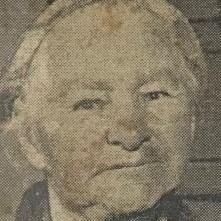
Karen Dorthea Andreasdatter (Mrs Rummel/Matheson); NOT Andreassen or Anderson(sen); Anglocised: Karen Dorothea.
Born: 17 October 1854, Østenstadeie i Asker [Østenstad Farm], Asker, Kristiania (Oslo), Norge (Norway);
Emigrated: 11 May 1872, Norway to New Zealand (Aotearoa);
Landed: 31 August 1872, Lyttelton Harbour, Christchurch, New Zealand (Aotearoa);
Died: 8 August 1938, Christchurch, New Zealand (Aotearoa).
Daughter of Andreas Ingebretsen (b. 1819–1824 in Stokkereie i Røgen, Norge), [Stokke Farm, Norway] and Anne Margrethe Larsdatter (b. 1828 in Elnæseie, Norge), [Elnæs Farm, Norway].
“In…Norway… [they] add[ed]… the suffix ‘-sen’ (son) or ‘-datter’ (daughter) to the father’s name. For example if Jon had a son Erik, he would be known as Erik Jonsen, or… daughter [Marit] Jonsdatter. The patronym was not a surname but just… their father… Women would retain their patronym when they married.”
This research is for Karen’s descendants and for historical and genealogical purposes only. If you want to use any research/documents regarding Karen’s life, please email me. DO NOT DOWNLOAD without permission. Links lead to the originals (multiple sources provided wherever possible).

Christchurch, New Zealand, 1930s
This is an audio-visual story, best viewed via a laptop or desktop screen.
Some mobile video issues exist (but media in multiple formats and original sources linked).
On mobile, turn your phone 90 degrees (landscape) to see photos at the largest size.
Please follow any instructions: e.g. “Press the ‘play’ arrow to listen to the audio below.”
Use ^ button to return to the top of the post.
Most importantly… enjoy!
In memory of Marion Frances Drew (1926-1999), Karen’s granddaughter, my grandmother, and the first seeker of this story.
Table of Contents
The Newspaper Article
In an old family photo album – pages stuck together with thin, perishing plastic –
an ageing newspaper article (clipped by hand from a page and clearly treasured) began…
17th October 1937
Full text transcribed below image.
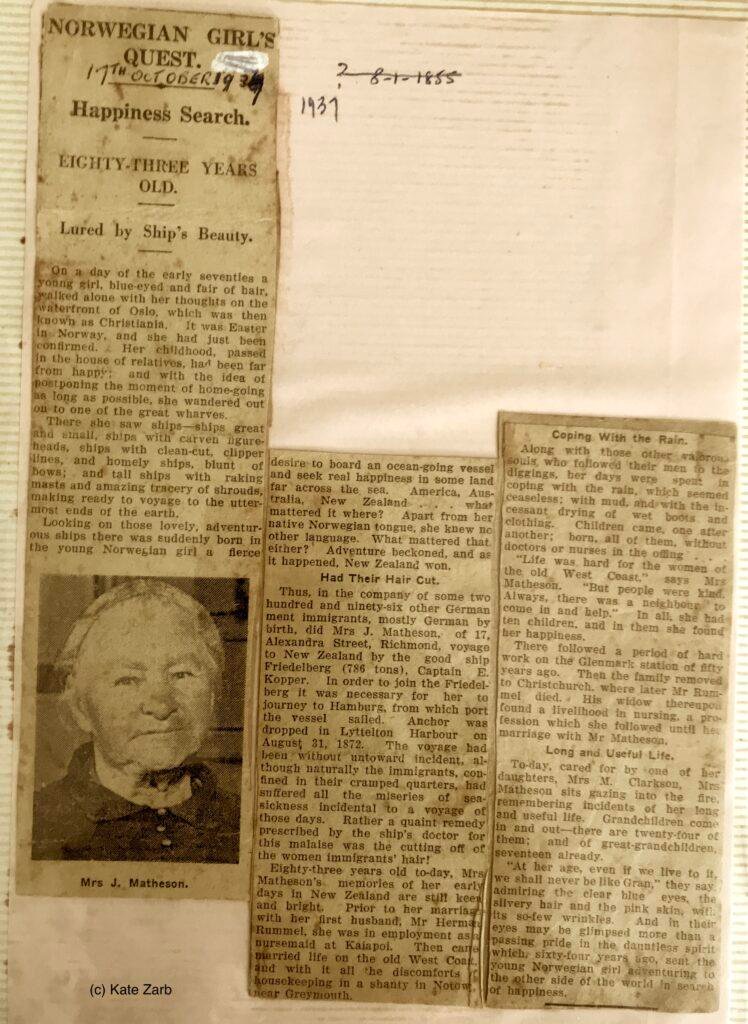
NORWEGIAN GIRL’S QUEST
Happiness Search.
EIGHTY THREE YEARS OLD
Lured by Ship’s Beauty.
On a day of the early seventies [1870s], a young girl, blue-eyed and fair of hair, walked alone with her thoughts on the waterfront of Oslo, which was then known as Christiania. It was Easter in Norway, and she had just been confirmed. Her childhood, passed in the house of relatives, had been far from happy; and with the idea of postponing the moment of home-going as long as possible, she wandered out on to one of the great wharves.
There she saw ships – ships great and small, ships with carven figure-heads, ships with clean-cut, clipper lines, and homely ships, blunt of bows; and tall ships with raking masts and amazing tracery of shrouds, making ready to voyage to the utter-most ends of the earth.

Looking on those lovely, adventurous ships there was suddenly born in the young Norwegian girl a fierce desire to board an ocean-going vessel and seek real happiness in some land far across the sea. America, Australia, New Zealand… what mattered it where? Apart from her native Norwegian tongue, she knew no other language.
What mattered that either?
Adventure beckoned and as it happened, New Zealand won.
Had Their Hair Cut
Thus, in the company of some two hundred and ninety-six other German… immigrants, mostly German by birth, did Mrs J. Matheson, of 17 Alexandra Street, Richmond, voyage to New Zealand by the good ship Friedelberg [sic] (786 tons), Captain E. Kopper. In order to join the Friedelberg [sic] it was necessary for her to journey to Hamburg, from which port the vessel sailed.
Anchor dropped in Lyttelton Harbour [Christchurch, New Zealand] on August 31, 1872.
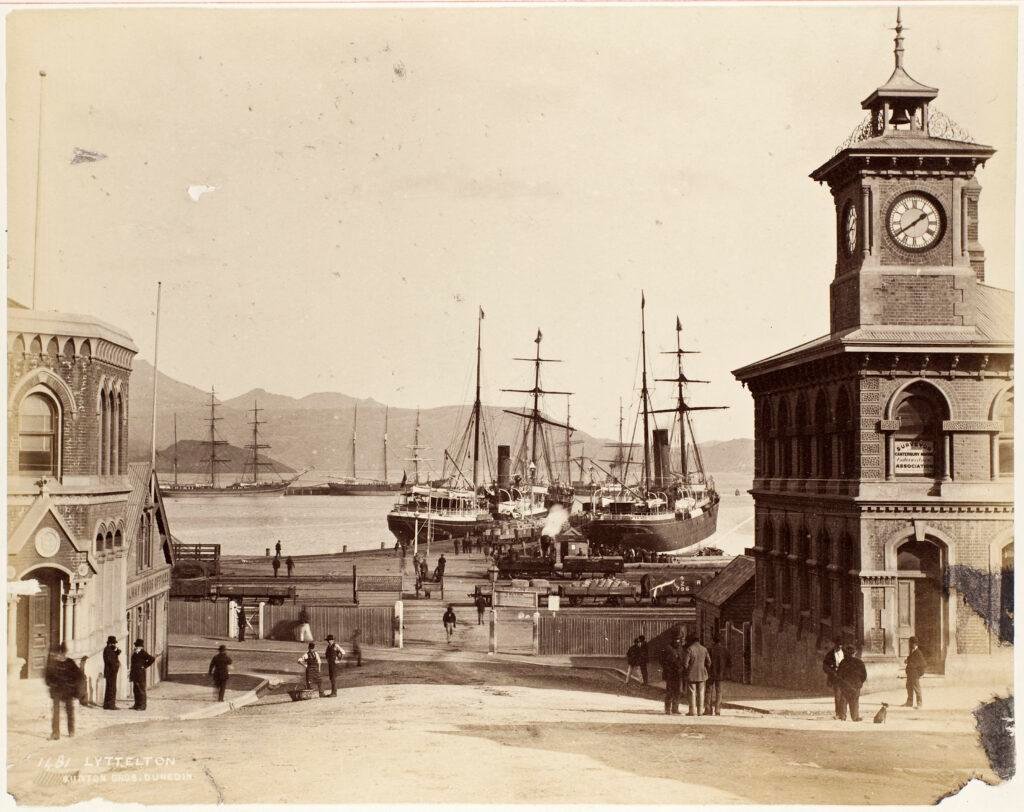
The voyage had been without untoward incident, although naturally the immigrants, confined in their cramped quarters, had suffered all the miseries of sea-sickness incidental to a voyage of those days.
Rather a quaint remedy prescribed by the ship’s doctor for this malaise was the cutting off of the women immigrants’ hair!
Eighty-three years old to-day, Mrs Matheson’s memories of her early days in New Zealand are still keen and bright. Prior to her marriage with her first husband, Mr Herman Rummel, she was employed as a nursemaid at Kaiapoi.

Then came married life on the old West Coast and with it all the discomforts of housekeeping in a shanty in Notown, near Greymouth.
Coping With The Rain
Along with those other women, souls who followed their men to the diggings, her days were spent in coping with the rain, which seemed ceaseless; with mud, and with the incessant drying of wet boots and clothing.
Children came, one after another; born, all of them, without doctors or nurses in the offling…
“Life was hard for the women of the old West Coast,” says Mrs Matheson. “But people were kind. Always, there was a neighbour to come in and help.” In all, she had ten children, and in them she found her happiness.

There followed a period of hard work on the Glenmark station of fifty years ago.
Then the family moved to Christchurch, where later Mr Rummel died. His widow thereupon found a livelihood in nursing, a profession which she followed until her marriage with Mr Matheson.
Long and Useful Life
To-day, cared for by one of her daughters, Mrs M. Clarkson, Mrs Matheson sits gazing into the fire, remembering incidents of her long and useful life. Grandchildren come in and out – there are twenty-four of them; and of great-grandchildren, seventeen already.
“At her age, even if we live to it, we shall never be like Gran,” they say, admiring the clear blue eyes, the silvery hair and the pink skin, with its so-few wrinkles. And in their eyes may be glimpsed more than a passing pride in the dauntless spirit which sixty-four years ago; sent this young Norwegian girl adventuring to the other side of the world in search of happiness.”
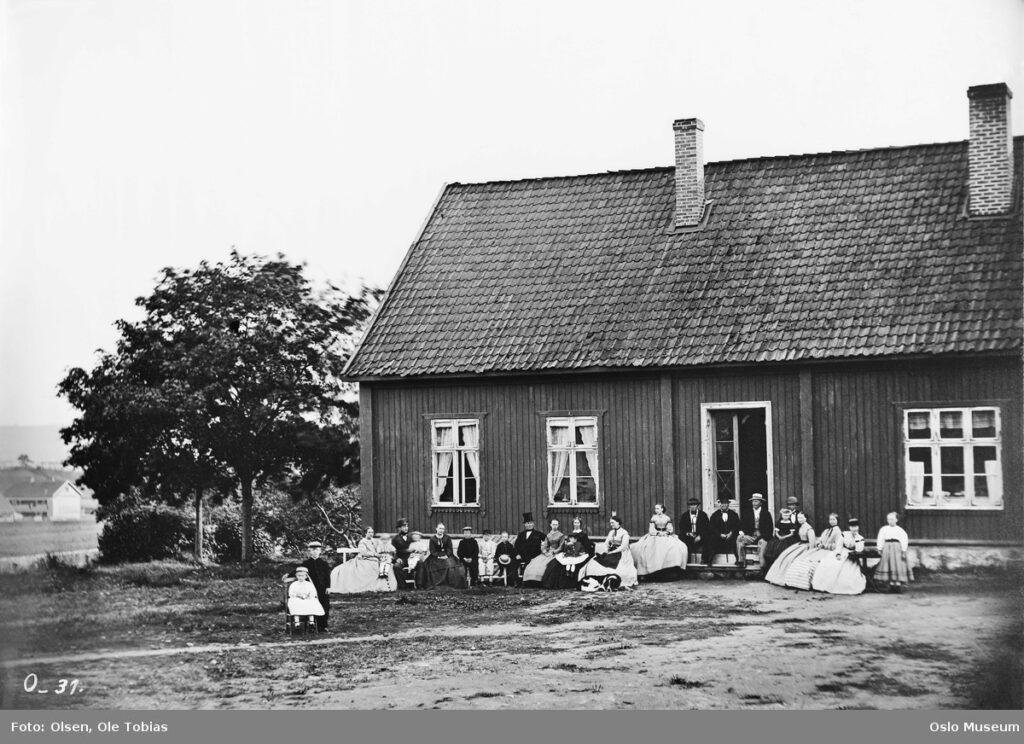
The Full Story
Press the ‘Play’ arrow below for “Säterjenten (The Farmer Girl)” and listen as you begin to read about Karen’s childhood in Norway.
1854: Østenstad eie i Asker [Østenstad Farm], Asker, Norway
Karen Dorthea Andreasdatter was born on the 17th of October 1854 in Asker, Kristiania (now Oslo), Norway, to father Andreas Ingebretsen (b. 1819–1824 in Stokkereie i Røgen) and mother Anne Margrethe Larsdatter (b. 1828 in Elnæseie).
Karen was the fourth of 10 children registered during their 1848 marriage; Lovise, Ingbret, Kristian (Christian), Karen Dorthea, Olaus, Anette, Lisa, Martine, Søren and Sjalotte Olufine (Charlotte Adolfine).
We do not know if Karen and her siblings went to school, but we know that “…in 1848, a law was passed requiring every town [in Norway] to maintain a common school, and making attendance compulsory from the age of seven to confirmation. The course, which in the past contained little beyond reading and Christianity, was broadened… The ability to read was quite general and books not rare.“
Asker is a municipality in Akershus county, part of the Greater Oslo Region. Karen’s parish registration (her baptism on the 3rd December, 1854) lists the family as living at [the] Østenstad eie i Asker (Østenstad Farm in Asker). Østenstad Farm has a long history, with the owners listed as the ‘Asker priesthood‘ in 1390 – later sold – and by 1826, “had 136 acres of inland, 3 horses, 8 cattle and 10 small cattle“.
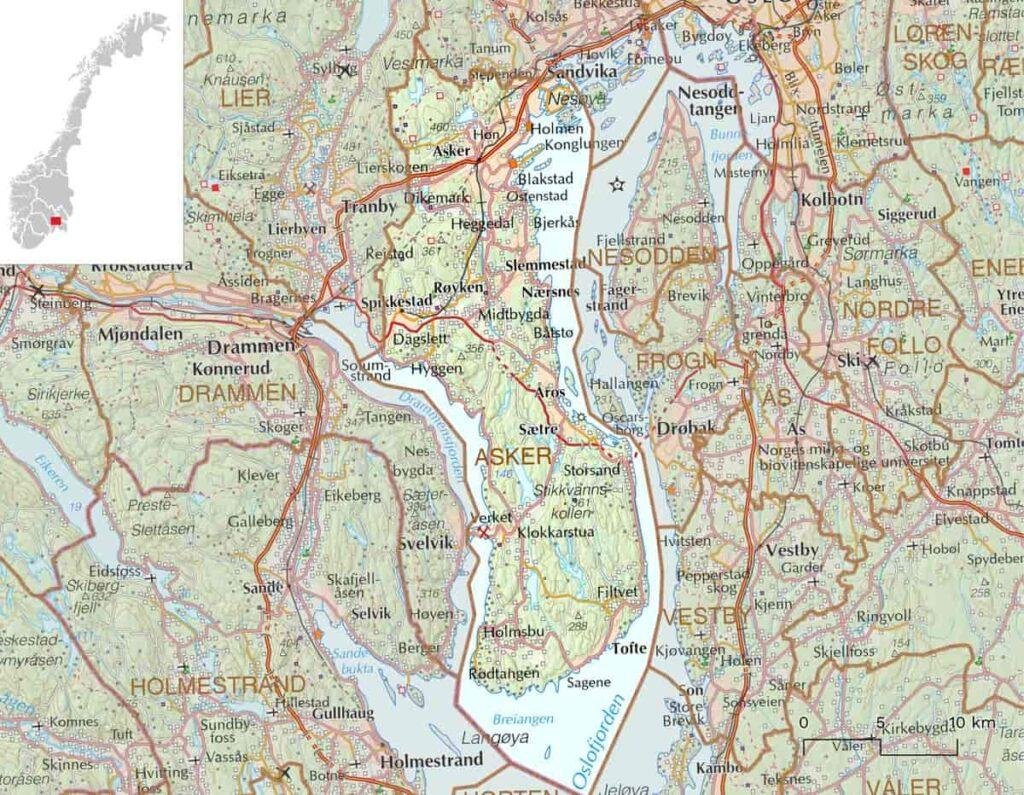
Karen’s parish registration also gives us further clues into what the family were doing at Østenstad Farm.
Andreas’ position is listed as ‘H’ or Husmand [husmann] med Jord [Cotter/Crofter with Land]. This means that it was very unlikely that the family owned the farm but instead “…had [a] lease contract (‘husmannsseddel’) [that was] limited in time“.
“The ‘husmann’ [cotter] class“, according to Johan I. Borgos, “had to make a living in a country where the land resources didn’t expand at the same rate [as the growing population]. Many couples could get a farm, but not all…
Then came a new possibility – farm land in another country. The emigration to America was heavily recruited from the ‘husmann’ group.”
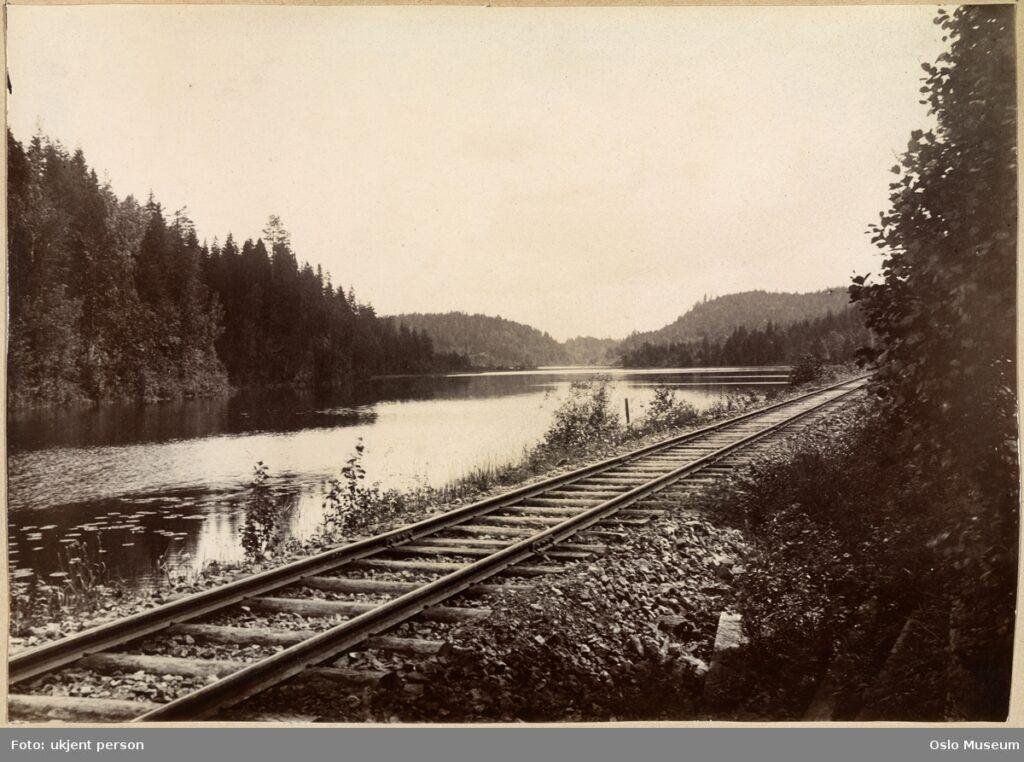
1856: Bjerkås eie i Asker [Bjerkås Farm], Asker, Norway
Two years later, we find the family at Bjerkaaseie [Bjerkås Farm] in a region just south of Asker, now with 5 children under 8 years of age; although we know little about them at this time.

“The cotters [husmenn] and their families often lived a vulnerable existence. The children had to work and fend for themselves from a very early age. The husmannsplass would normally have some arable land but not always. The cotter often had an additional profession, for example, shoemaker, tailor, lumberjack and so on. As the husmann did not own his own land, he was also the one being the socially most inferior. When it came to domestic animals, the cotter may have had a cow or two, a pig and some sheep and chicken“.
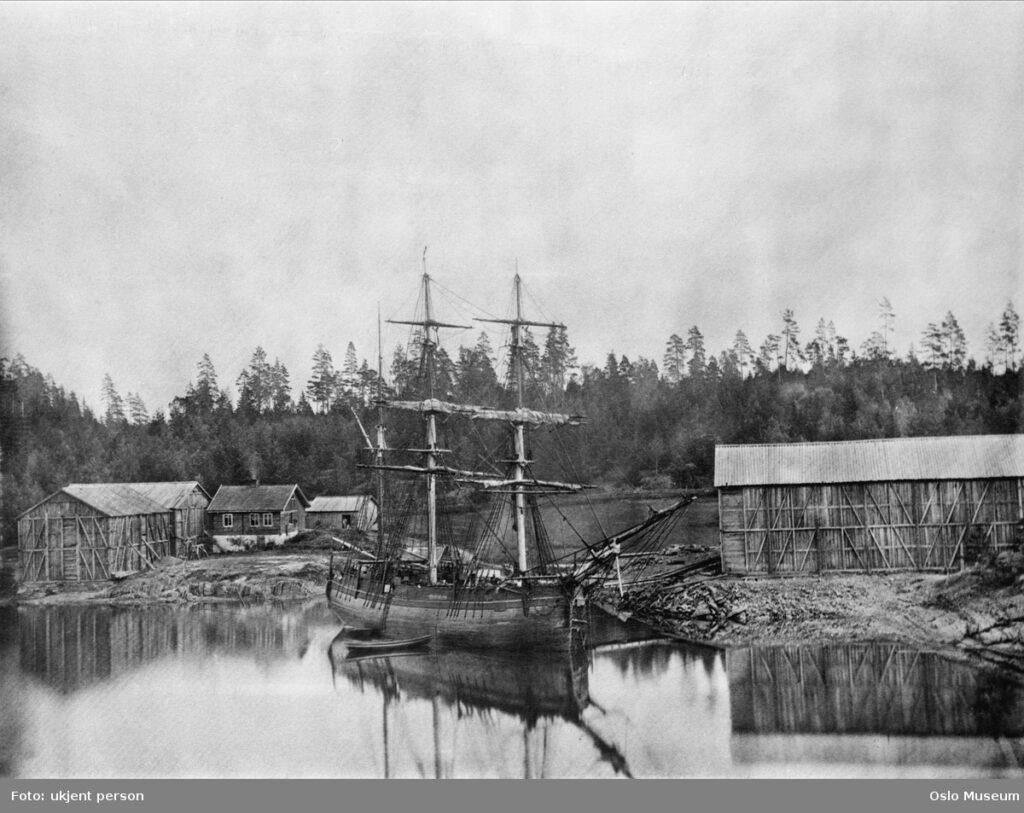
1865-1872: [Ch]Kristiania (now Oslo), Norway
Karen’s newspaper article speaks of “childhood, passed in the house of relatives, [that] had been far from happy” and we begin to see how challenging life was for Karen and her siblings.
By 1865, there were 5 children living at home, but the children are now replaced by their younger siblings – Olaus, Anette, Lisa, Martine and baby Søren. The four eldest were in various locations: Ingbret (15) was living as a ‘Foster søn‘ with Sven Nilsen and his wife Oline; assumed to be related. Kristian (13) was listed as living in the home of Jørgen Ingebretsen and his wife Dorte as ‘hans Søstersøn [his sister’s son]’.
Eldest sister Lovise (18) was working as a maid [Tjenestepige] in the home of an Asker family.*
*Note: I cannot cross-check 1865 Census information, due to limited data.
Karen, now only 11 years old, also seems to be living far away.
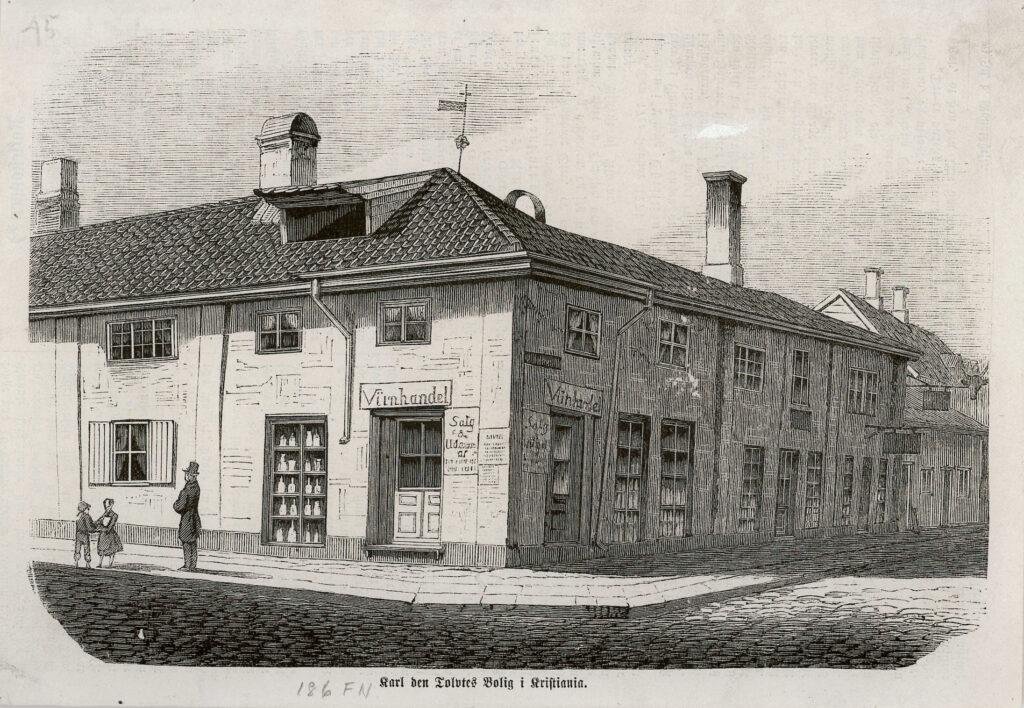
In a similar fashion to brothers Ingbret and Kristian, Karen is listed as living with Martin Borgen and his wife Charlotte as a ‘Pleiedatter [Foster Daughter]’ in the ‘Trefoldighed[t]s Menighed[t]‘ district of the country’s capital, Kristiania (now Oslo).
We don’t exactly know the relationship between the family and Martin Borgen, a Policeman [Politibetjent], but he is listed as also from Asker County.
A family letter of unknown origin stated “Her [Karen’s] father and uncle were police and her brothers went to sea.” Another anecdotal family story states “…that great-grandmother left Norway because her stepfather was the Head Detective in Oslo. Norway was of course under Swedish rule at that time…”
These anecdotal family stories, however important, cannot be verified. What we do know is that ten years later Martin Borgen appears to have changed profession, and was found listed as a “Basement master [in a] Stock brewery“.
Karen’s profession on documents at 17 years of age lists her as ‘Nurse’, so she may have received some nursing instruction.
Norway, in 1865, was under the control of Charles XV, King of Sweden. No links to any Head Detective in Oslo have been found at this time.
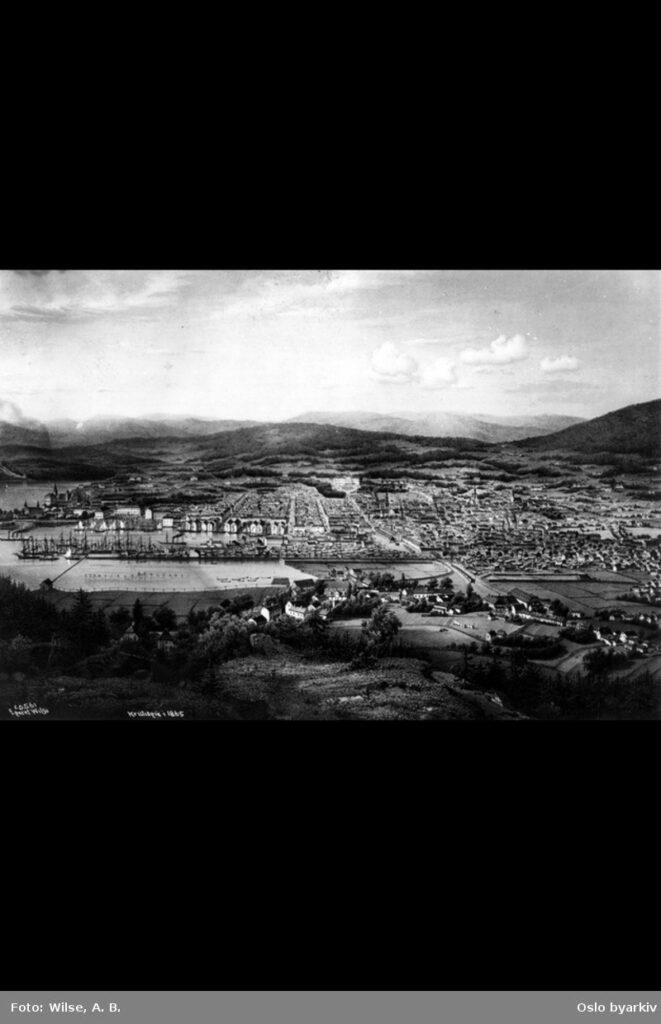
Journalists tell stories, and the poetry of “wander[ing] out on to one of the great wharves… [and there suddenly being] born in the young Norwegian girl a fierce desire to board an ocean-going vessel and seek real happiness in some land far across the sea” is impossible to verify.
With no close family emigration as inspiration or motivation (although there is a possible record of brother Søren going to New York years later, in 1888) – it may well be steeped in truth – but is also likely representative of something larger in the Norwegian ‘zeitgeist’ [collective spirit] of 1871.
Norway’s population was in the process of mass emigration. According to Ingrid Semmingsen, “In the half-century [between 1865-1915] some 600,000 people left Norway to settle overseas“.
While the overwhelming majority went to America (USA), other developing colonies (like Australia and New Zealand) sought Europeans – and offered opportunities that couldn’t be found at home.
“There were three main types of immigration to New Zealand in the late 19th century…The second minor groups of assisted immigrants were non-British migrants. The colony were prepared to look further than traditional sources such as Britain, extending their promotional activities to Denmark, Sweden and Germany.
Scandinavians were considered particularly suitable since they could become a self-supporting population upon the land which public works (that is, railways) rendered accessible and productive… The initial pull factors were not due to distress but to the hope of advancement in life.“
“In 1871, the New Zealand government sent Swedish settler Bror Erik Friberg to recruit in Norway and Sweden. Agents like Friberg offered subsidised passage and 40 acres of land at £1 per acre, all of which could be paid off by working on road and rail construction.”
However she became aware of this offer (or one similar), Karen seized the opportunity to “board an ocean-going vessel and seek real happiness”.
1872: [Ch]Kristiania (now Oslo), Norway to Christchurch, New Zealand
Departure
St Olaf departed Kristiania, Norway on 11 May 1872. “In order to join the Friedelberg [sic] it was necessary for her to journey to Hamburg…”
“Norwegian emigrants travelled via Germany… [but] most… travelled via Britain. The majority of Norwegians travelling on the German ships, had to make the first step of their voyage on a feeder ship to Germany. There were regular routes between Norwegian ports and the German ports…“
“Thus, in the company of some two hundred and ninety-six other German[s]… voyage[d] to New Zealand by the good ship Friedelberg [sic]…“
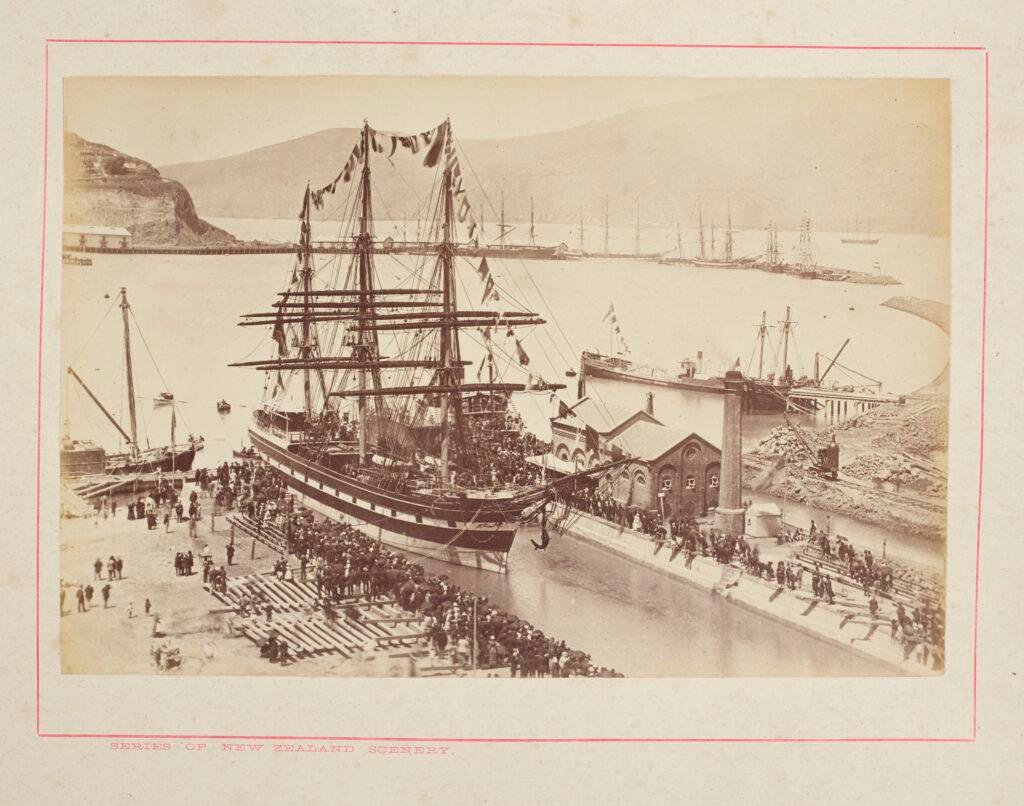
Arrival
THE FRIEDEBURG, FROM HAMBURG.
STAR (CHRISTCHURCH), ISSUE 1409, 2 SEPTEMBER 1872
“This fine iron ship… arrived, and anchored off the Heads, on Friday afternoon…The immigrants are mostly Scandinavians and Poles, with about a dozen German families. They comprise 61 single women and 34 single men, the rest being married people and children… The passengers looked very healthy, and are in good spirits...
The following is Captain Kopper’s report of the voyage:
“[We] sailed from Hamburg on May 21st, passed the Lizards on June the 1st ; crossed the line on June 23rd, but was detained by calms at Fernando Norunha for three days ; got the S.E. trades from the 8. by E. ; had to stay several times on the coast of Brazil until past the Abruhas Shoals ; passed the longitude of the Cape on July 21st in 45deg. S. ; passed the Crozettes on July 30th, and Tasmania August 19th ; eastings were ran down in 48deg. to 50deg. ; then had light variable winds to sighting the Snares on Aug. 26th ; thence had variable winds, with rain and fog, until Aug. 30th at 9.am. on that day Banks Peninsula was made, Godley Heads same day, and at 4 p.m. dropped anchor, making the passage from the Lizards in 90 days.”
IMMIGRANTS BY THE FRIEDEBURG.
STAR (CHRISTCHURCH), ISSUE 1409, 2 SEPTEMBER 1872
“The first shipment of immigrants direct from Germany arrived in Port Lyttelton on Saturday last… The ship was signalled outside the heads on Friday afternoon, but the name of the vessel could not be ascertained until the following day… The s.s. Gazelle, Capt McLellan, was chartered to take the party to the vessel. [They] started about 10 o’clock… but some delay was occasioned through the barque getting fast on a bank… [then] the Gazelle proceeded to the ship, which was lying at anchor two miles outside the North Head.
On approaching the vessel, the flag flying at the stern bespoke her country, and there was no longer any doubt as to her being the Freideburg.
Drawing nearer the immigrants were mounted on the bulwarks of the ship anxiously awaiting our arrival, and the chorus of a cluster of single women on the poop settled the point as to their nationality.
Seen from the deck of the Gazelle, the large group of immigrants presented a somewhat novel spectacle. Three or four nations were there represented — the Germanic, the Germanic Polish, the Norwegian, and the Danish, all chattering away in the language and dialects of their respective countries...
The immigrants were in the very best of spirits, and spoke hopefully of the future in their adopted home. Unfortunately, not one of them could speak English, and they expressed a considerable amount of anxiety in consequence, but they were in a great measure consoled when told that there were several of their countrymen in the province, and that they would soon be able to pick up the language in a country where English was universally spoken...
Beginning with the single women’s compartment, the muster roll was called over, and the girls were asked (through the interpreters) whether they had any complaints to make. Their general reply was that they had been well treated during the voyage… Amongst the married couples, one immigrant was pointed out as having walked from the Russian frontier to Hamburg (a distance of about 800 miles) with his wife and five or six children, sleeping at farm houses and often times in the open air on their way to join the ship.
It was a curious fact, that while those on one side of the vessel (Polish-Germans) complained about the insufficiency of food ; those on the opposite side (Norwegians and Danes) expressed entire satisfaction. The former were asked how they could account for this, and their reply was that the latter were richer than themselves, and besides bringing more comforts with them, had money enough to enable them to procure what they wanted. ..The same thing, however, was noticeable in the single men’s compartment ; here the Danes and Norwegians were perfectly satisfied with their treatment on board…
Speaking of the immigrants as a whole, they are undoubtedly a very good selection, and if they follow the excellent advice given to them by the two interpreters, they will have no reason to regret coming to New Zealand. Their ignorance of English will doubtless be a considerable disadvantage to them for some time, but they will not be long in acquiring a sufficient knowledge of the language to enable them to get along comfortably with those by whom they may be employed. It is probable that many of them will find employment from their own countrymen.
The Friedeburg sailed from Hamburg on the 18th of May, having on board 292 persons, representing 241 adults. On the voyage out, there was one death — a child 11 months old — and six births, thus increasing the number of souls to 297...
Which regard to nationalities, the numbers are as follows: Germans (including Polish), 102 persons above 12 years, 68 children and 5 infants; Norwegians, 51 persons above 12 years, 5 children, and 3 infants; Danes, 47 persons above 12 years, 9 children, and 2 infants. This total of 10 infants does not include those born since the sailing of the ship.
The ship is admirably adapted for the conveyance of immigrants, and is superior in many respects to the vessels that come from London. The height between decks is 8ft and 6ft in, the ventilation is good, but there is an insufficiency of light in all the compartments...
The immigrants will disembark at noon today, and will be conveyed by special train to Addington. The Barracks will be open to employers on Thursday. We are informed that at the Immigration Barracks no fewer than 90 applications for domestic servants! have been received…”
SCANDINAVIAN IMMIGRANTS
STAR (CHRISTCHURCH), ISSUE 1413, 6 SEPTEMBER 1872, PAGE 2
“[T]he immigration barracks were thrown open yesterday for the engagement of the recent arrivals by the German ship Friedeburg…“

“There was a large attendance of employers, and the barracks were a very busy aspect from the hour of opening to the close. The proceedings were also of a somewhat more animated character than usual, owing to the extra talking which had to be done in consequence of all business negotiations being conducted through interpreters… All the immigrants appeared very contented in disposition…
Of sixty-one single women, 42 met which engagements, the wages being— cooks, £30; general servants and housemaids, £20; nursemaids, £12 to £18. Eleven of the 42 were engaged ; to go to Timaru, and it may be stated that nearly all the 42 were engaged by English employers. Of course it will be understood that in every instance given above the wages are exclusive of board and lodging.
It is very probable that several of those immigrants remaining at the barracks will be engaged in a few days, and it should be stated that more of the single women would have been engaged yesterday had time permitted for the negotiations to be completed.“
DINNER— Last night the German residents of Christchurch and its vicinity gave a complimentary dinner at Schmidt’s Hotel to their countryman Captain Kopper, of the ship Friedeburg, in which the Scandinavian immigrants recently arrived. The room was decorated with national flags, conspicuous amongst which was a German banner presented by Captain Kopper to the Germans of this province…
The chairman in an eloquent speech proposed “The Queen and the Royal Family”, referring at length to their connection by blood with Germany, and stating that Germans ever received the most favourable consideration from English rulers. The toast was drank with great enthusiasm.”
During the early years of assisted migration (1871–76) “there were 3,327 arrivals. In 1878 Scandinavians [were] 1% of the New Zealand population – the highest proportion they were ever to reach.“
1872-1876: Kaipoi (near Christchurch)
“Prior to her marriage with her first husband, Mr Herman Rummel, she was employed as a nursemaid at Kaiapoi.”
“A nursemaid (or nursery maid) is a mostly historical term for a female domestic worker who cares for children within a large household. The term implies that she is an assistant to an older and more experienced employee, a role usually known as nurse or nanny.“
“In the 1870’s there were more men than women in the settler population – single women were encouraged to immigrate to New Zealand in order to address this imbalance. Throughout the nineteenth century domestic service remained the major form of paid employment for women. A servant could command a weekly wage of ten to twelve shillings [10s. – 12s./£0.5 – £0.6/week, or £2 – £2 1/2 month] – much higher than in England.
The Spencer family employed several – a children’s nurse, general-servant, household maid, washerwoman and groom… Anna [Spencer]… tersely commented on the many hours spent searching for the right kind of person to employ as housemaid, nursemaid, washerwoman or groom.
Servants were found by word-of-mouth, through newspaper advertisements or by visiting the immigration barracks after a ship arrived. When the Waitara anchored, Anna made sure she arrived early to get first choice of the young women available for service. Although Anna tended to complain bitterly about the servants, she genuinely valued those who gave dedicated service. She called each by their Christian name and gave them gifts on special occasions.
However, like all households requiring a servant, Anna was constantly burdened with losing young women to marriage. Anthony Trollope wrote on a visit to New Zealand in 1872, a woman could “if she be well conducted and of decent appearance be sure to get a husband who can keep a house over her head. For such persons New Zealand is a paradise...”
“All the single women… wh[o] arrived less than two months later, were rapidly placed at £20-£30. The strength of the demand for servants, the ignorance of many who were necessarily engaged, and the unsubdued, almost egalitarian nature of their relations with their employers were common observations.”
Family document states: “George Walter Wiezel Andrasen [sic] Rummel [b.] 10 October 1874 in Riccarton, Christchurch, New Zealand”. I cannot find records for this child.
1875-1879: Christchurch
“To all to whom these presents shall come, greeting.
Whereas Gottlob Constantine Hermann Rummel of Christchurch in the Province of Canterbury in the Colony of New Zealand, [Profession of] cook, being a person of good repute, hath duly presented to me his humble memorial praying that letters of naturalization may be granted to him, and a certificate as by law is required, and hath duly taken the oath prescribed by “The Aliens Act 1866”.
Now know ye that I, GEORGE AUGUSTUS CONSTANTINE, Marquis of Normanby, the Governor of the said Colony of New Zealand, in pursuance and exercise of the power vested in me by the said Act, do herby grant unto the said GOTTLOB CONSTANTINE HERMANN RUMMELL these Letters of Naturalization, and that he the said Gottlob Constantine Hermann Rummell shall hereafter have and enjoy all the rights and capacities which natural-born subject of the United Kingdom can enjoy or transmit within the Colony of New Zealand.
Given under the hand of His Excellency the Most Honorable GEORGE AUGUSTUS CONSTANTINE, Marquis of Normanby, Earl of Mulgrave, Viscount Normanby, and Baron Mulgrave of Mulgrave…”
3rd Day of April, 1875, Enroled in The Office of The Honorable the Colonial Secretary, Register No. 6, Page 34 this [Signature].
In 1875, a young man from Germany and “a person of good repute” enjoys “all the rights and capacities” of a New Zealander…but less than a year later, we find Herman Rummel in ‘hot water’ with a bag of soap.
“LARCENY. – Herman Rummell was brought up on two separate charges, of having stolen goods from the Belfast Factory, on the North road. From the evidence it appeared that prisoner, who had been employed as cook at the factory for some years, was suspected of theft. On the date named in the warrant, Mr Watt, manager, watched him, and saw him put a bag containing something into a baker’s cart, to be taken to his house. Mr Watt went up to the prisoner and asked him what he had in the bag, when he replied, clothes; but on Mr Watt taking hold of it, he found it contained soap.
Prisoner snatched the bag from him, ran into the pantry, and would not let any one in. Ultimately a Constable was sent for and prisoner was arrested, when it was found that the bag contained soap to the value of about 9s. Prisoner was sentenced to three months’ imprisonment with hard labour. The second charge against prisoner, was for having stolen meat, which he had been seen to send home some time ago, but as he asserted he had purchased it from the foreman, who had since left the Province and could not be called in evidence, the case was dismissed.”

We don’t know any more details about Herman’s three-month sentence, but “…jails were a low priority for provincial spending, and remained overcrowded and substandard. Prison labour gangs were regularly used for road-building and other public works.”
Thankfully, by the end of 1876, he was a free man and about to embark upon marriage and a decade-long quest to make his fortune (and that of his rapidly growing family).

We also don’t know how Gottlob Constantine Hermann (Herman) Rummel and Karen Dorthea Andreasdatter met, or even if they spoke the same language. “English and German, have close similarities with Norwegian [but] neither is mutually intelligible with it.” This means that it is possible that with a combination of English, Norwegian (and any possible German Karen knew from her voyage), the two began their relationship.
At this time, he was in his mid-30s and she was in her early-20s.
In 1878, they married.[1878/2097]
In 1879, Charlotte(a) Johanne ‘Anna/Lottie’ Rummel (1879-1957) was born. [1879/14084]
“Then came married life on the old West Coast and with it all the discomforts of housekeeping in a shanty in Notown, near Greymouth…”
In 1880 – newly married – Herman, Karen and baby Charlotte set out to find gold.
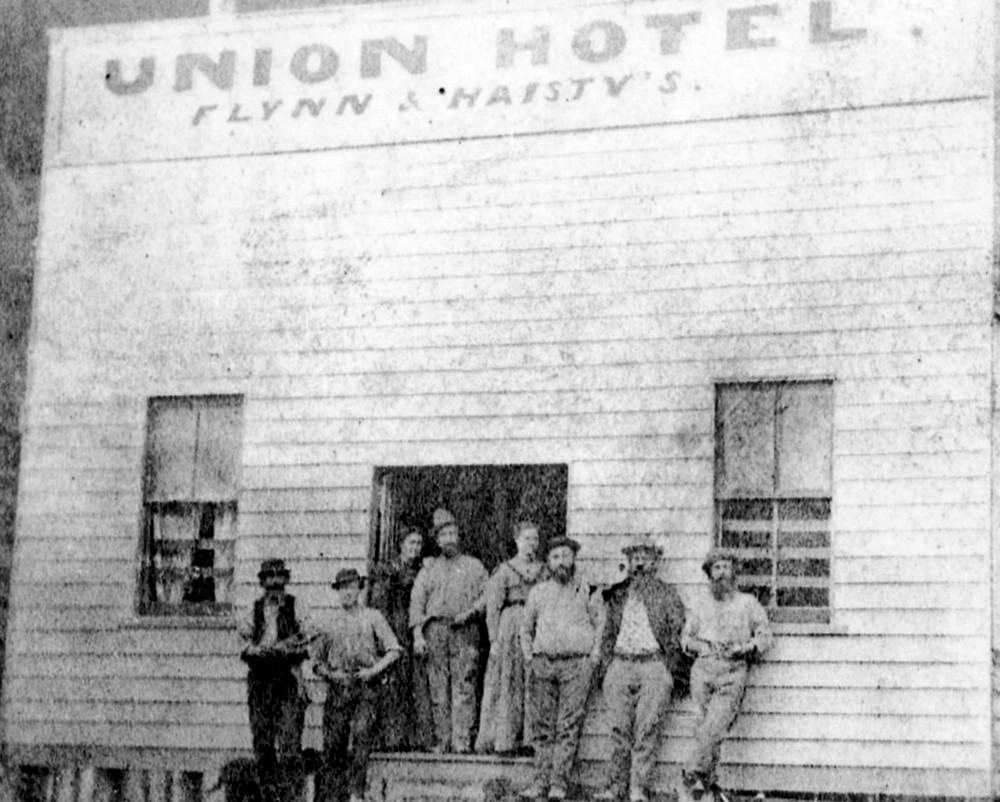
1880-1888: Notown (near Greymouth)
“By 1876, Notown, 17 miles inland from Greymouth, in the Grey Valley, was flourishing as a properly laid-out, booming gold town… NoTown had six streets and upwards of 5000 diggers with 25 hotels to keep them happy.“
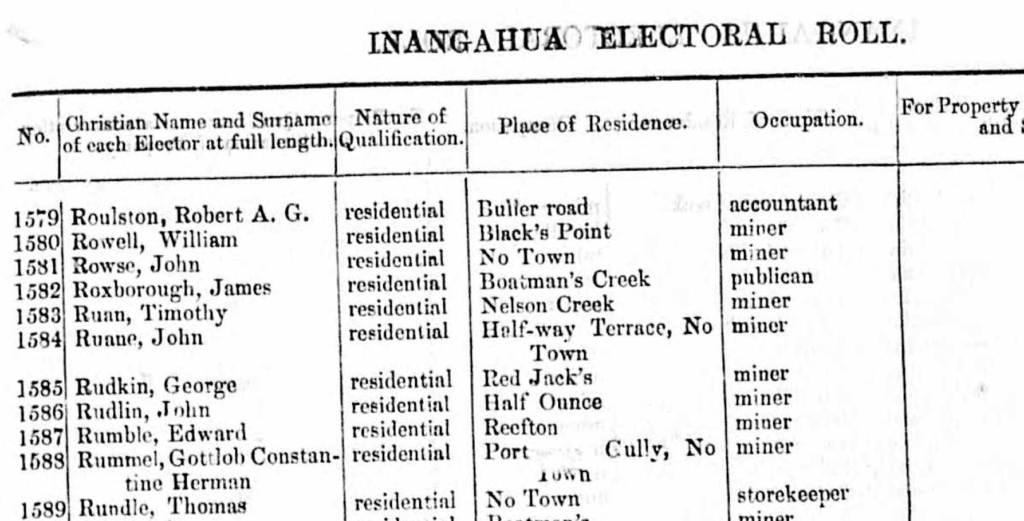
Gottlob Rummel – Miner, Port[ugese] Gully, No Town, (Inangahua Roll 1880-1881) NZ, Electoral Rolls, 1853-1981.
“[Norwegians living in Norsewood, New Zealand were comprised of] families [who] often shared crude punga and tōtara bark houses while ‘slabs-hus’ (slab huts) were built. Men laboured on roads and railways, often living away from home to pay debts.
Women and children remained in rough forest homes growing cabbages, potatoes and carrots among the tree stumps...”
[In Norsewood, in New Zealand’s North Island] “…During the 1880s the railway slowly progressed through the bush. Sawmilling began, and tree by tree the land was cleared to become productive farmland. Crude huts were built at what was labelled ‘the Scandinavian Camp’… Because living costs were high, they supplemented sugar and flour with the forest’s bounty – eels, honey, pigs, cattle and ‘vild-duen’ (wood pigeons).“
Three more children were born while at Notown: May, Dorothea and Catherine.
May Constance Rummel (1881–1901)[1881/7794]
Dorothea Emma Rummel (1883 – 1922)[1883/7610]
Catherine Jane Rummel (1885–1959)[1885/2664]
“Along with those other women, souls who followed their men to the diggings, her days were spent in coping with the rain, which seemed ceaseless; with mud, and with the incessant drying of wet boots and clothing. Children came, one after another; born, all of them, without doctors or nurses in the offling… Life was hard for the women of the old West Coast,” says Mrs Matheson. “But people were kind. Always, there was a neighbour to come in and help.”

…to an immense volume, and were it not that its course was obstructed… by… sandbags… it would have made a clean breach through the town…
…The Biennial concert and ball in aid of the funds of the Public Reading Room and Library came off on Friday evening…
Press the”Play’ arrow to listen to the song that Karen likely played in Notown in 1885, “(Kvernslatt) The mill wheel [tune]” below.
Kvernslatt (Mill-Wheel Tune), Slatter og stev fra Siljustol (Tunes and Dances from Siljustol), Op. 22: Suite No. 2,
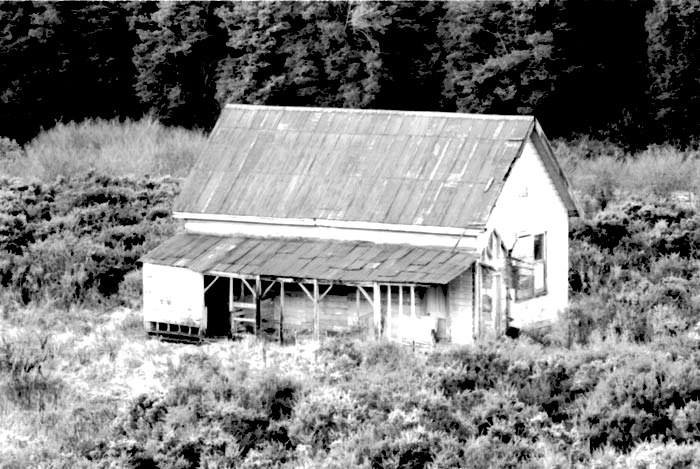
“By the 1880s coal mining and timber milling had become the main industries of the district [Greymouth]. Today… practically… a single dredge…“
We don’t know if the family ever ‘struck gold’ but by 1888, they were headed back towards Christchurch.
1888-1898: Amberley (near Christchurch)
“There followed a period of hard work on the Glenmark station of fifty years ago.” Glenmark station, North Canterbury, near Amberley.
“THE AMBERLEY TOWN DISTRICT was constituted on the 12th of May, 1885. The area of the town is 540 acres, apart from roads. The main north road runs through the district, and the boundaries extend about half a mile on the west, and half a mile on the east side“.
Four more children followed for Karen and Herman in Amberley: Henry, Maud, Mary and Herbert.
Henry Gottlob Rummel (1888–1912)[1888?]
Maud Agnes Rummel (1891–1955)[1891/14934]
Mary Louis Rummel (1894–1957)[1894/897]
Herbert Hermann Marten Rummel (1895–1897(?)
“AMBERLEY is a pleasant town district in the county of Ashley, within a mile or two of the sea. It is about fifteen miles north from Rangiora, and thirty-four miles from Christchurch. Agriculture and sheep farming are carried on prosperously in the district… Fine views of the sea are obtainable from most parts of the town. The railway station is 135 feet above the level of the sea. One mile nearer Christchurch there is a flag station known as Grey’s Road, and three miles northwards there is another named Greeney’s Road, so that the district is well off for railway stations. “
CLEARING SALE – GREENY’S ROAD, AMBERLEY. MESSRS AYERS, BEAUCHAMP & CO. have been favoured with instructions from Mrs Rummel to hold a CLEARING SALE, On the premises as above, On WEDNESDAY, SEPT. the 2nd, at 12.30. HOUSEHOLD FURNITURE, Including Piano, in walnut, by Chappel and Co, carpets, pictures, chairs, books, tables, coal vase, fenders and irons, cruets, epergne, curtains, dinner ware, sewing machine (Singer), chests of drawers, washstands, ware, D.I. beadsteads, bedding, clocks, kitchen utensils &c. Also, 1 spring trap, 1 chestnut mare, set harness, cows, 2 pigs, poultry and dairy requisites. Entries invited. No reserve. 2011 AYERS, BEAUCHAMP & CO., Auctioneers.
In 1897, Gustav Fritz Constantine Rummel (1897–1969)[1897/2656], their final child was born.
By 1898, the property was for sale.
A.P TUTTON. AMBERLEY. BY ORDER OF THE MORTGAGEES. SUBSTANTIAL 5-ROOMED HOUSE AND 5 ACRES OF LAND FOR SALE BY AUCTION. MONDAY, SEPTEMBER 19th, 1898. MR A. P. TUTTON has received instructions TO SELL. All that Property comprised in Mortgage deed Registered No. 89932, late in the occupation of Mrs Karen Dorothea Rummel, being part R.S. 7997, Kowai District, near Greeney’s road, Amberley. Sale at 3p.m. Terms Cash. A. P. TUTTON, [9463] Auctioneer, Rangiora.
1899-1903: Christchurch
“Then the family moved to Christchurch, where later Mr Rummel died.”
Death of Gottlob Constantine Herman Rummel (1841-1903) on 16 February 1903.[1903/1645]
FUNERAL NOTICES – The Friends of the late Mr Herman Rummel are invited to attend his Funeral, which will leave his late residence, 65 Nursery road, Linwood, on Wednesday, at 3.30p.m., for Linwood Public Cemetery. GEORGE BARRELL, Undertaker and Embalmer. (7208)
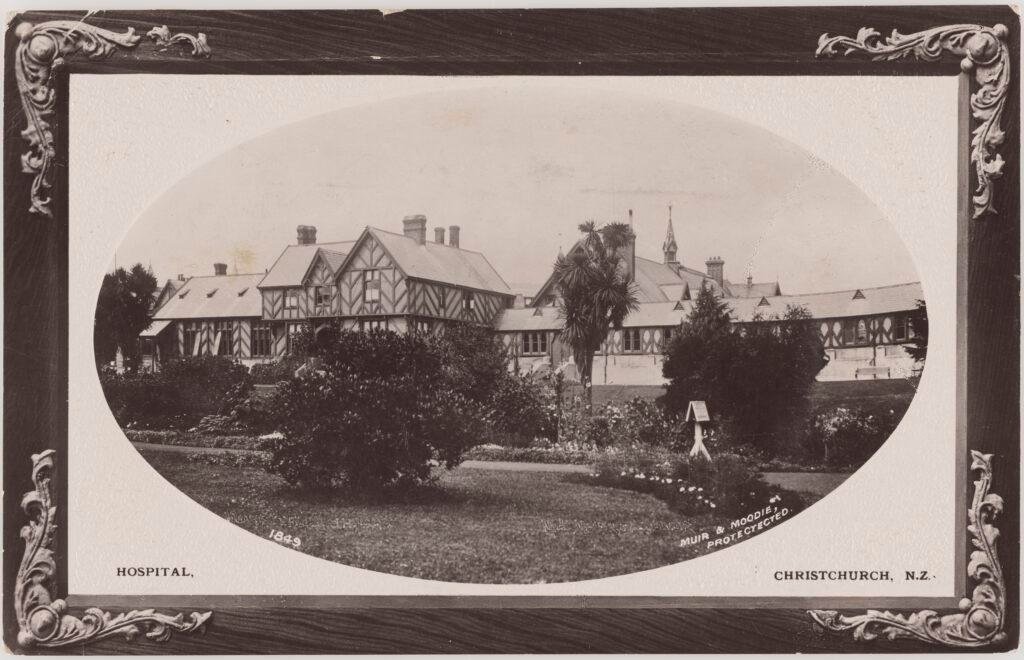
“His widow [Karen] thereupon [in 1903] found a livelihood in nursing, a profession which she followed until [1915]…”
1903-1915: Christchurch
“The first hospital [in New Zealand] was established in Auckland in 1850. From about 1883 untrained nurses were replaced with trained nurses. Nurses from around the world had been inspired by Florence Nightingale’s approach to nursing during the Crimean War and realised that cleanliness and some form of training was essential when caring for the sick. In 1888 lectures were first given to student nurses who had to pass an exam after 12 months training and in the early 1900s nurses were able to become registered and even undertake postgraduate studies.
In 1901 New Zealand was the first country to have registered nurses with the Nurses Registration Act.”
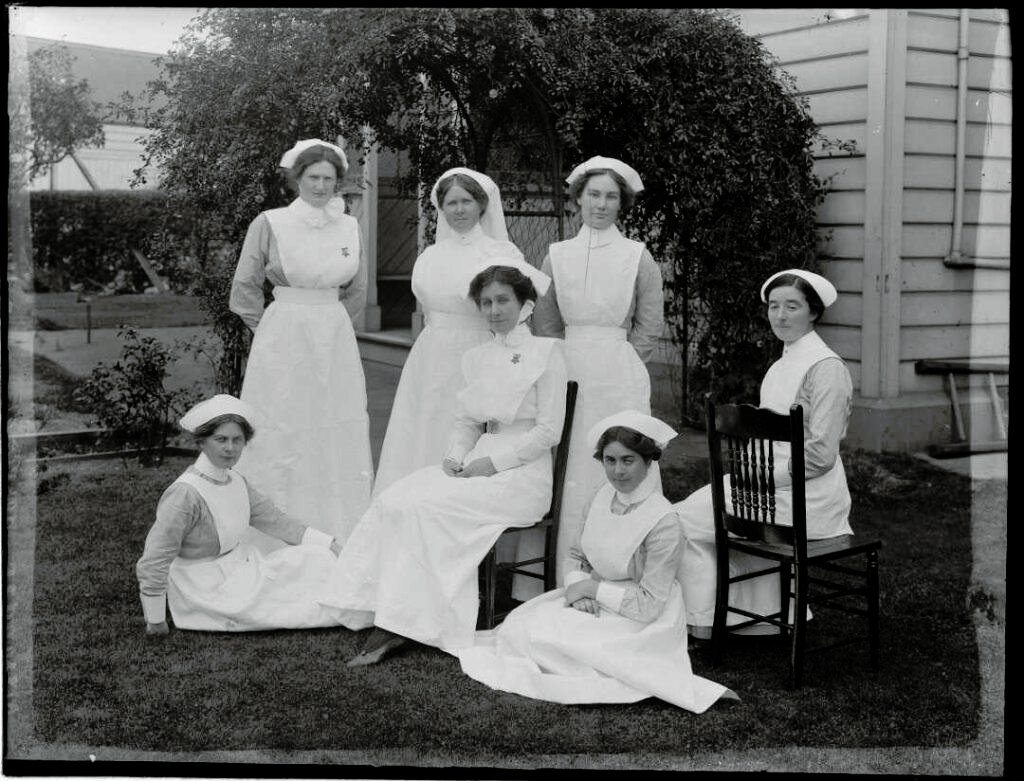
Karen was a very early recruit into this new – and greatly improved – nursing system.
A search of New Zealand, Registers of Medical Practitioners and Nurses from 1882-1933 does not lead to us finding any formal registration for her, but at this time she had given birth to at least 9 children – likely 10. This gave her a very strong, personal understanding of the birthing process, and her skills and knowledge would have been invaluable within the hospital.
Now, with more than 30 years of living and working within the English language, it appears that she was able to earn – alone – enough to support herself and her children for the next decade.
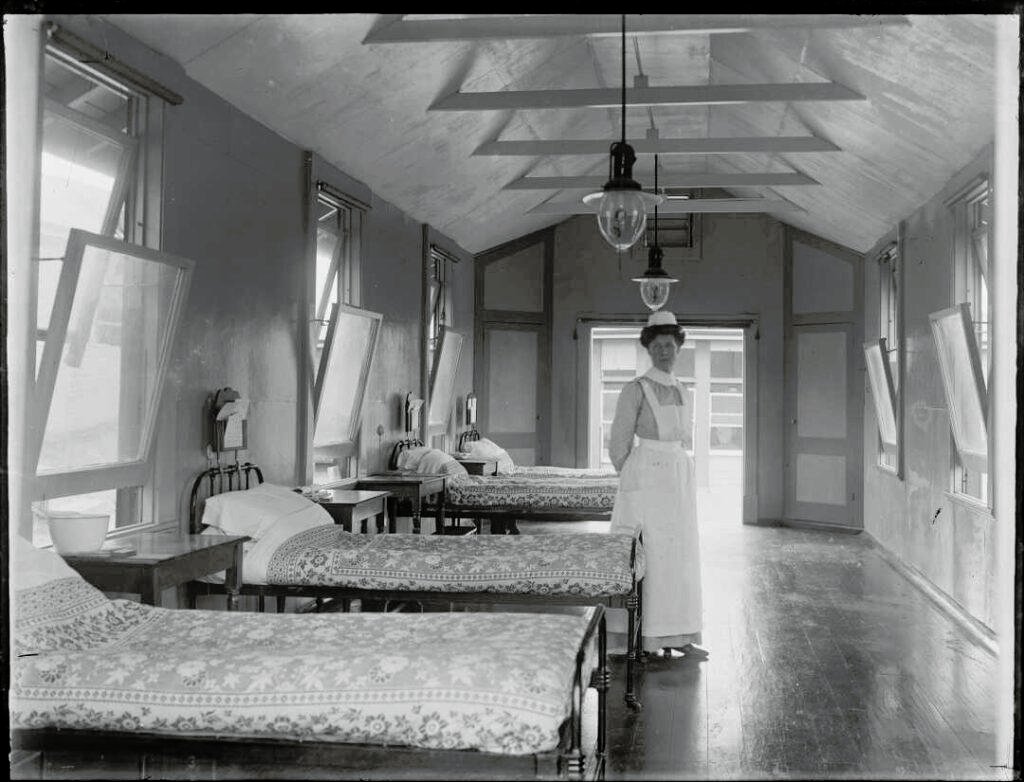
Sadly, losses – both great and small – were also to follow.
Death of Henry Gottlob Rummel (1888–1912) on 23 December 1912.
“RUMMEL. On December 23, 1912, at Sunderland, England (accidentally killed), Henry Gotlob Rummel; aged twenty-five years. Second son of Mrs H. Rummel, No. 11, Conference Street, Christchurch. Gone, but not forgotten. Berlin papers please copy.”
There is no accurate confirmation of how young Henry died, except that he was in England and that an accident occurred.
One year later…
23 December 1913
RUMMEL. – In loving memory of Henry, beloved son of Mrs Rummel, accidentally killed in Sunderland, England, on December 23, 1912.
We never knew the pain he had.
We never saw him die.
We only know he passed away,
And never said good-bye.
People think we have forgotten
When at times they see us smile.
But they little know the aching heart
That smile hides all the while.
Inserted by his loving mother and family.
Sunderland papers please copy.
In 1913, we find Karen living at 11 Conference St, Christchurch in an inner-city home, but we know little else except for her grief over the loss of her son Henry. Sadly, grief and tragedy were about to come in great force to New Zealand. For both Karen and many, many other mothers.
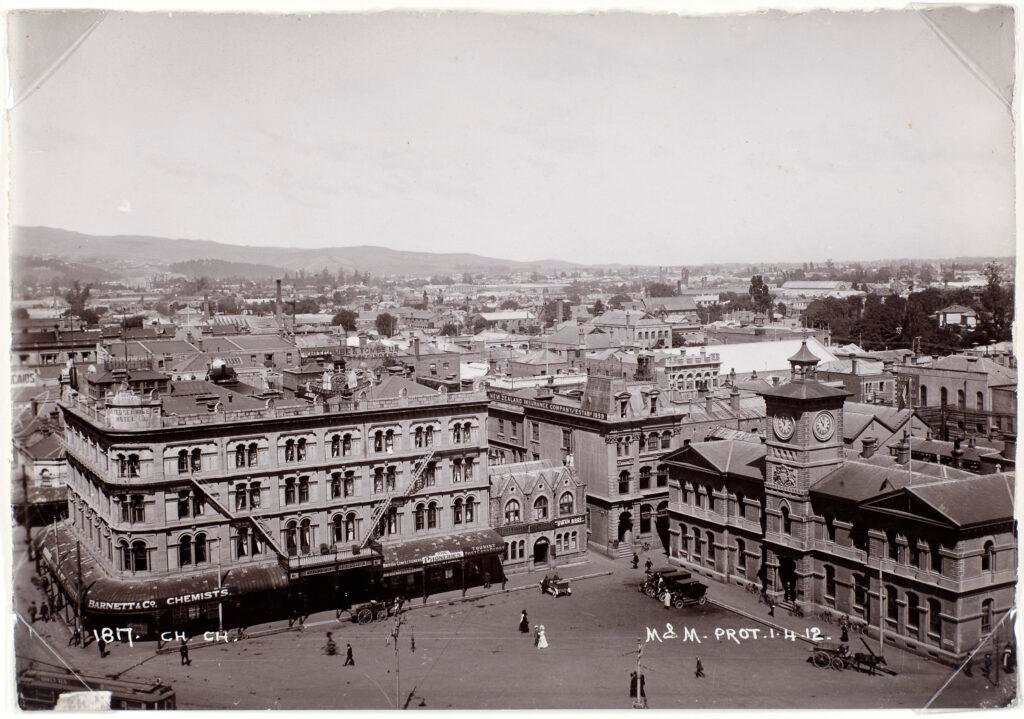
1914: World War 1
18 June 1914
NEW ZEALAND MILITARY FORCES, ATTESTATION FOR SERVICE IN TIME OF WAR, WITHIN AND BEYOND NEW ZEALAND.
Questions to be put to the Recruit.
1. What is your name? Surname: RUMMEL, Christian names: Constantine
2. Where were you born? ChCh N.Z.
3. What is the date of your birth? 8th Jan[uary] 1897
4. Are you a British subject?: Yes
5. What are your parents’ names? Father: Rummell Constantine, Mother: Rummell, Dorothea; Maiden surname of mother: Anderasen [sic].
6. Where were your parents born? Father: England, Mother: Norway
7. If your parents were of alien birth, state when and where they were naturalised? –
8. What is your trade or calling? Casual labourer [Name Provided].
9. What is your address in New Zealand? [25 Address Provided].
10. Who is your next of kin? (state relationship): [Dora Rummell, 25 Address Provided].
11. What is the name and address of your present or last employer? [Name Provided].
12. What are your educational qualifications? Primary [Text Provided].
13. Are you single, married, a widower, divorced, or legally separated from your wife? Married.
If married, of what nationality was your wife before marriage? England.
14. If married, a widower, divorced, or legally separated from your wife, how many children under sixteen years of age have you? One.
15. If single with dependants, state who they are…
I do solemnly declare that the answers made by me to the above questions are true, and that I am willing to fulfill the engagement made. Signature of Recruit: [Signature]. Oath to be taken by Recruit on Attestation,
I, CONSTANTINE RUMMEL do sincerely promise that I will be faithful and bear true allegiance to our Sovereign Lord the King, and that I will faithfully serve in the New Zealand Military Forces against His Majesty’s enemies, and that I will loyally observe and obey all orders of the Generals and Officers set over me, until I shall be lawfully discharged. So help me God…
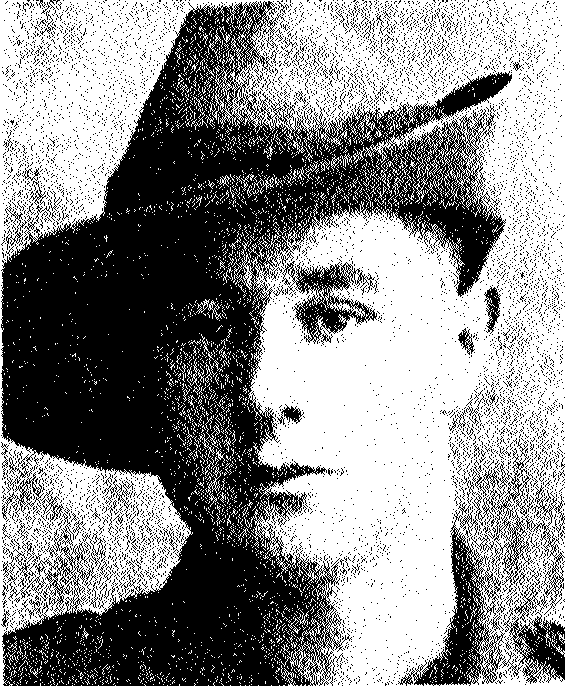
Author Note: The following articles contain graphic depictions of death, violence and war.
To skip reading until after World War 1, click here.
“The Dardanelles, a narrow 60-mile-long strip of water that divides Europe from Asia, has been of great strategic significance for centuries... By late 1914, movement on the Western Front had ground to a halt. Some Allied leaders suggested opening new fronts to break the deadlock, shorten the war and avoid heavier loss of life. Soon after the start of the new year, Great Britain and France attempted to force the Dardanelles and attack Constantinople (now Istanbul), the capital of the Ottoman Empire.”
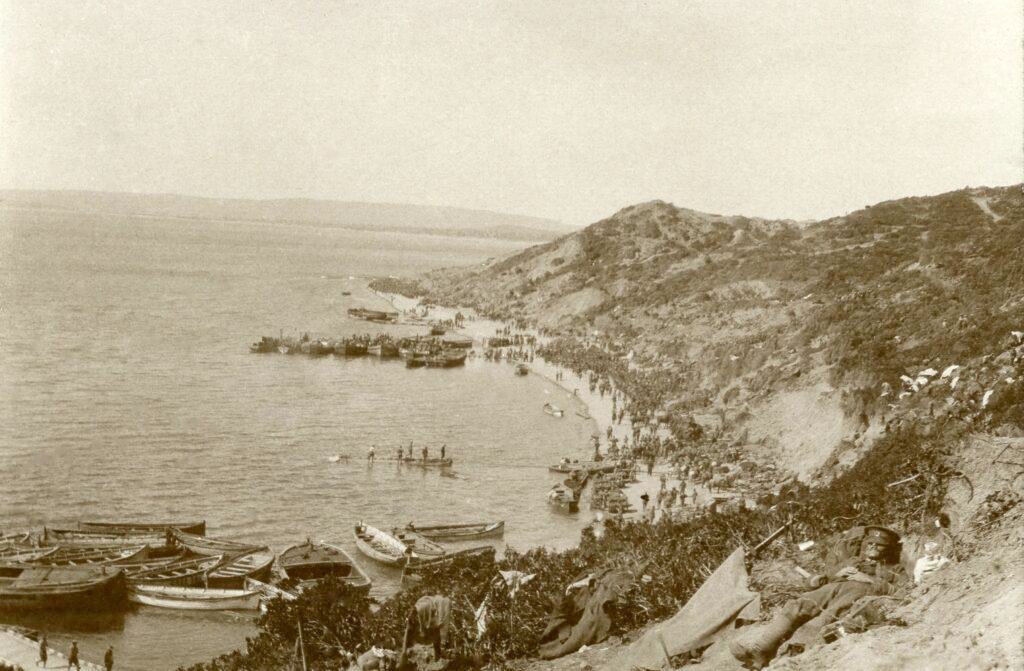
25 April 1915
“The ANZAC land near Ari Burnu at what has become known as Anzac Cove on the Gallipoli peninsula of Turkey. The first New Zealand troops land in the late morning… New Zealand troops made their first major effort of the First World War during the Allied invasion of the Gallipoli Peninsula in April 1915... On Sunday 25 April, the MEF [Mediterranean Expeditionary Force] launched its invasion of the Dardanelles…”
Press the ‘play’ arrow to listen to watch a 1 minute video on the conditions in Gallipoli below.
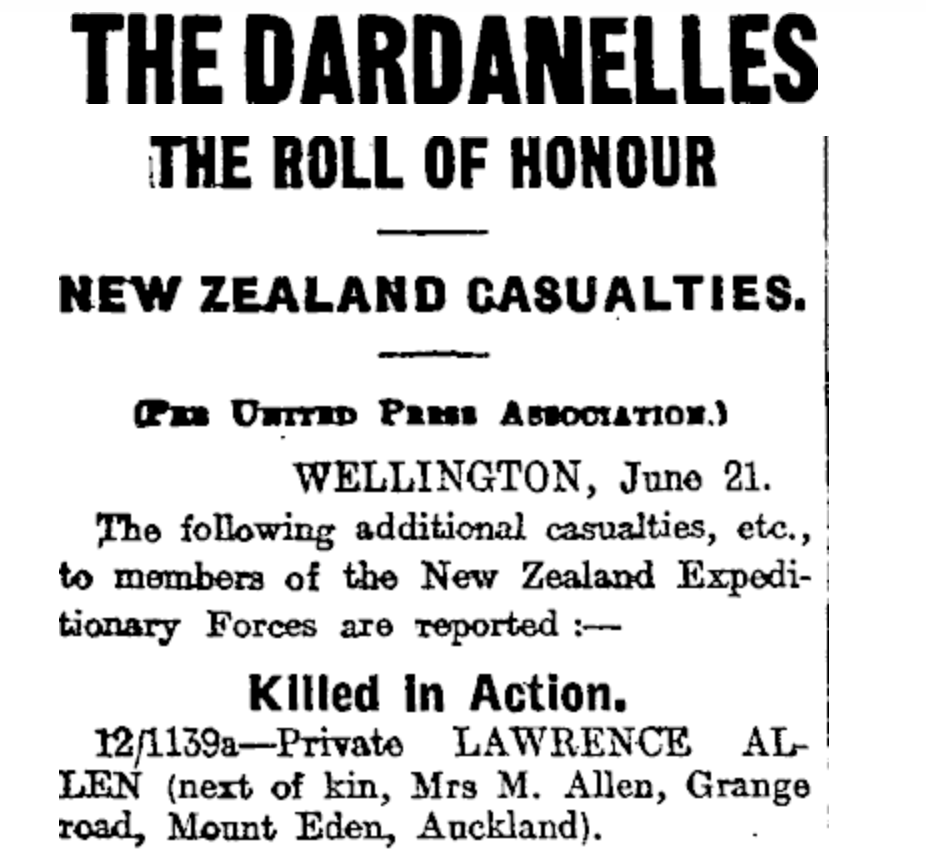


Author Note: The following articles contain graphic depictions of death, violence and war.
To skip reading until after World War 1, click here.
“…[T]he 8,454-strong New Zealand Expeditionary Force (NZEF) was quickly assembled under the command of Alexander Godley, a British general on loan to New Zealand. It left New Zealand on 16 October 1914, the largest body of men (and horses) to leave New Zealand at any one time.
…Men who volunteered for service trained for 14 weeks at Trentham, near Wellington… and later at a major camp created at Featherston, in Wairarapa. Over the next four years 42 drafts, each roughly 2,000-strong, left New Zealand – approximately one every month...
Contrary to expectations, the main body of the New Zealand Expeditionary Force did not go straight to Europe, but disembarked from their ships at Alexandria in Egypt and went by train to Zeitoun, near Cairo…
Following the failure of a naval attack on the Dardanelles, the Allies landed on the Gallipoli Peninsula on 25 April 1915… [but]… Ultimately, the Allies cut their losses and by early January 1916 all troops had been evacuated from Gallipoli. In all, 2,779 New Zealanders died.”
3 February 1915
“New Zealand soldiers see first combat of the war when they help defend the Suez Canal from an attack by Ottoman troops…”
“New Zealanders, like the Australians, sustained themselves through their bonds of comradeship and self-discipline as most of the trappings of formal discipline were abandoned. However, men could still be ‘crimed’ for serious breaches of battle discipline such as falling asleep on sentry duty in the trenches. This was the offence of the first New Zealander sentenced to be shot by firing squad in the war. His sentence was remitted, but he was killed in the assault on Chunuk Bair just three days after his sentence was promulgated before his unit.
Savage and costly as the Gallipoli campaign was, it was merely an overture to the mechanised slaughter of the Western Front. Here the soldiers of the NZEF were introduced to the rigid standards of discipline demanded in the British Expeditionary Force – and to the severe punishments which followed failure to conform… less common but more serious military crimes such as desertion, refusal to obey an officer and self-inflicted wounds were more likely to occur. The military authorities’ responses to indiscipline also followed a pattern, with a high percentage of convictions in courts martial and the suspension or commutation of most prison sentences in order to keep offenders in service with their units.
Twenty-eight sentences of death were passed on soldiers of the NZEF and five were shot by firing squad as ‘an example to the rest’.
The men who received these extreme sentences were often friendless and alienated in their units, sometimes suffering from shell-shock or combat fatigue, and in many cases their crimes were due to excessive drinking – the conventional profile of deserters in all wars. They were not ‘cowards’, some being conspicuously brave men whose nerves had broken.”
Pte. Rummel, CF. is “sentenced to death”.
“Constantine Rummel was one of 28 New Zealand servicemen who were court-martialled and sentenced to death during the First World War. This was commuted to a sentence of ten years’ Penal Servitude [Service/incarceration]…”
– Pugsley, ‘On the Fringe of Hell’, pp. 350-51.”
Serial No. 6/1209
Private RUMMEL Constantine
Occupation: Labourer
Age: 20
Birthplace: NZ
Offence: Desertion
Date: 16 June 1917
Sentence: Death/Mercy.
Death by firing squad for New Zealand soldiers: ‘The Executed Five’:
“After being found guilty of desertion, 28-year-old Private [Name Witheld] was killed by a firing squad in Hallencourt, northern France. He was the first New Zealand soldier executed during the First World War… On 12 August, [He] appeared before a Field General Court Martial at Armentières, charged with ‘Deserting His Majesty’s Service’. He pleaded not guilty, blaming his behaviour on alcohol: ‘Owing to the effect of drink I was light-headed and wandered out of the trench...” Despite his protestations [He] was found guilty and sentenced to ‘suffer death by being shot’...
The execution was carried out the next morning in an orchard in the village of Hallencourt. [He] was led from his cell and placed against a tree. He was offered a blindfold but refused, reportedly saying: ‘Don’t put the bandage over my eyes – I want to see them shoot.’ At 5.50 a.m. the firing squad, made up of men from the New Zealand Pioneer Battalion, opened fire... [He] was buried in the adjacent Hallencourt Communal Cemetery...[He] was one of 28 members of the NZEF sentenced to death during the war.
In September 2000 all five men received posthumous pardons when [The NZ] Parliament passed the Pardon for Soldiers of the Great War Act.”
* *Unredacted record here.
Press the ‘play’ arrow to watch a 5 minute video on ‘The Executed Five’.
To read more about ‘The Executed Five’, visit New Zealand History (Nga korero a ipurangi o Aotearoa).
THANKFULLY…
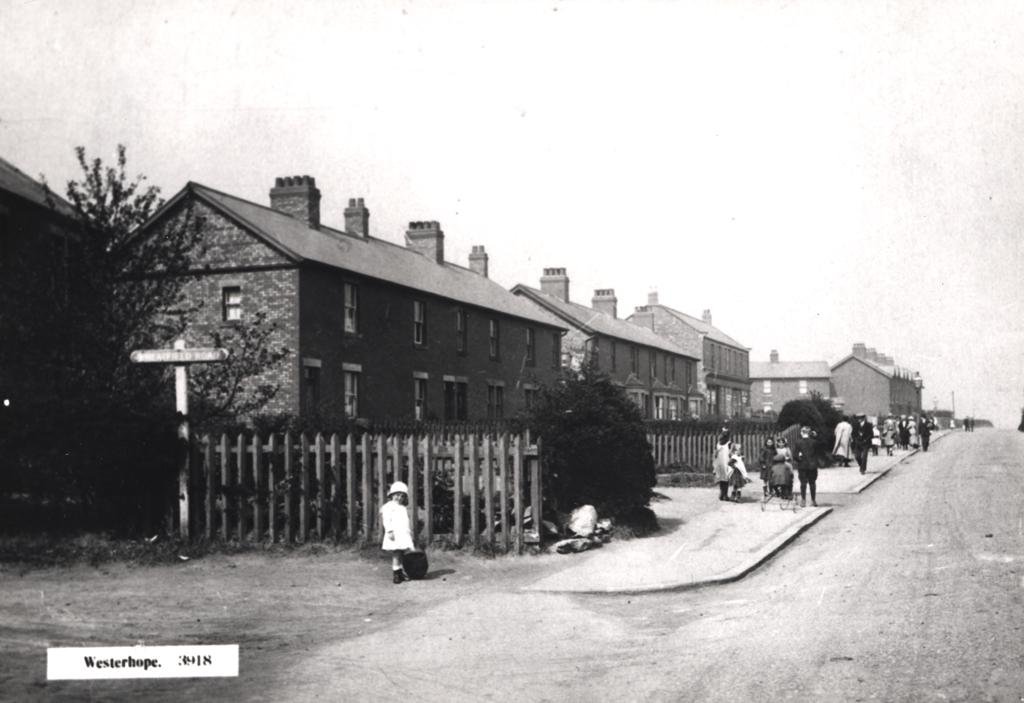
We do not know exactly what happened to Constantine Fritz Rummel during the next few years, but just over two years later…
Pte. Rummel, CF. is “away” in Sunderland by 1920.
…and “hopes to go back [to NZ] eventually.”

EX N.Z.E.F.
SOME OF “THE BOYS”
WHAT THEY ARE DOING
(FROM OUR CORRESPONDENT.)
LONDON, 5th December
Mr. C. Rummel (6/1209) is away in Sunderland,
but he hopes to go back to New Zealand eventually.
Constantine Fritz Rummel
SERVICE NUMBER
WWI 6/1209
MEDALS AND AWARDS
Victory Medal
British War Medal (1914-1920)
EMBARKATION DETAILS
WW1 16 October 1914 from Wellington, New Zealand
HMNZT 4 or HMNZT 11
Vessel was Tahiti or Athenic
Private
Canterbury Infantry Battalion (Main Body)
ENLISTMENT
WW1 Labourer/Civilian
Canterbury, New Zealand
After losing one son to an accident, we can only imagine the anguish that those years brought Karen and the mothers of the soldiers of World War 1. “In the First World War, just over 100,000 troops left New Zealand…more than 16,000 lost their lives and over 41,000 were wounded.”
During the war, she quietly married John Matheson [1915/2440] and moved to a new home in Christchurch. He, sadly, passed away seven years later on 8 December, 1922. [1922/10733]

1922: Christchurch
By the end of 1922, Karen had been widowed twice, and had lost two sons – Herbert Hermann Marten Rummel in 1897, age 2; and Henry Gottlob Rummel, age 25, in 1912. Daughter Dorothea (Dorothy) Emma Shatford (nee Rummel) died on 29 July 1922, at age 39. She had almost lost Constantine Fritz in WW1 as well, but he had narrowly escaped with his life.
“New Zealand’s economic fortunes fluctuated [in] the 1920s… a post-war boom followed by a sharp recession in 1921–22 and another downturn around 1926. Much worse was to come when the Great Depression reached New Zealand in 1930… Exports of meat, dairy products and wool to Britain continued to provide most New Zealanders with a comparatively high standard of living, but there was a wide gap between rich and poor.“
The 1930s in New Zealand remained difficult; “unemployment rose to 12% of the registered workforce in 1933, and those lucky enough to keep their jobs often found their wages slashed by as much as 20%“.
During challenging times, we often turn to our family, and this is where Karen found care in her final decade.
1937: Christchurch
Long and Useful Life
“To-day, cared for by one of her daughters, Mrs M. Clarkson, Mrs Matheson sits gazing into the fire, remembering incidents of her long and useful life. Grandchildren come in and out – there are twenty-four of them; and of great-grandchildren, seventeen already.
At her age, even if we live to it, we shall never be like Gran,” they say, admiring the clear blue eyes, the silvery hair and the pink skin, with its so-few wrinkles. And in their eyes may be glimpsed more than a passing pride in the dauntless spirit which sixty-four years ago; sent this young Norwegian girl adventuring to the other side of the world in search of happiness.”
Karen Dorthea Andreasdatter was born into poverty in Norway, and her life in New Zealand (Aotearoa) often provided little more. Like hundreds of thousands of other Norwegians, she left in search of a life for her children that provided them with more than she was given.
She journeyed to the other side of the world to make a living in a new land and encountered back-breaking labour, childbirth without medical care, an unsympathetic legal system, and the WW1 ‘military machine’. Yet, despite the obstacles, she raised a large, loving, family who cared for her until her dying day.
Press the ‘play’ arrow to hear a popular 1938 Norwegian ballad as we say “ha det [Goodbye]”.
1938: Christchurch, New Zealand
MATHESON – On August 8, 1938, at the residence of her daughter, Mrs T. Clarkson. 17 Alexandra Street, Richmond, Karen Dorothea, widow of the late John Matheson; aged 84 years. At rest.
PRESS, VOLUME LXXIV, ISSUE 22475, 9 AUGUST 1938, PAGE 1
MATHESON – In loving memory of my dear mother, Karen Dorothea, who died August 8, 1938. At rest. – Inserted by her loving daughter, Lottie.
PRESS, VOLUME LXXV, ISSUE 22783, 8 AUGUST 1939, PAGE 1
In some ways, Karen Dorthea was an extraordinary woman – pioneer, nurse and mother – but in others, she led an ordinary life. History often neglects the stories of women of this time. Karen’s life represents a turning point in history, the effects of which are still felt in New Zealand (Aotearoa) today.
May her life be fondly remembered, as well as the hundreds of thousands of other brave Norwegian settler women who went “adventuring to the other side of the world in search of happiness.“. In our eyes… “may be glimpsed more than a passing pride in [your] dauntless spirit“.
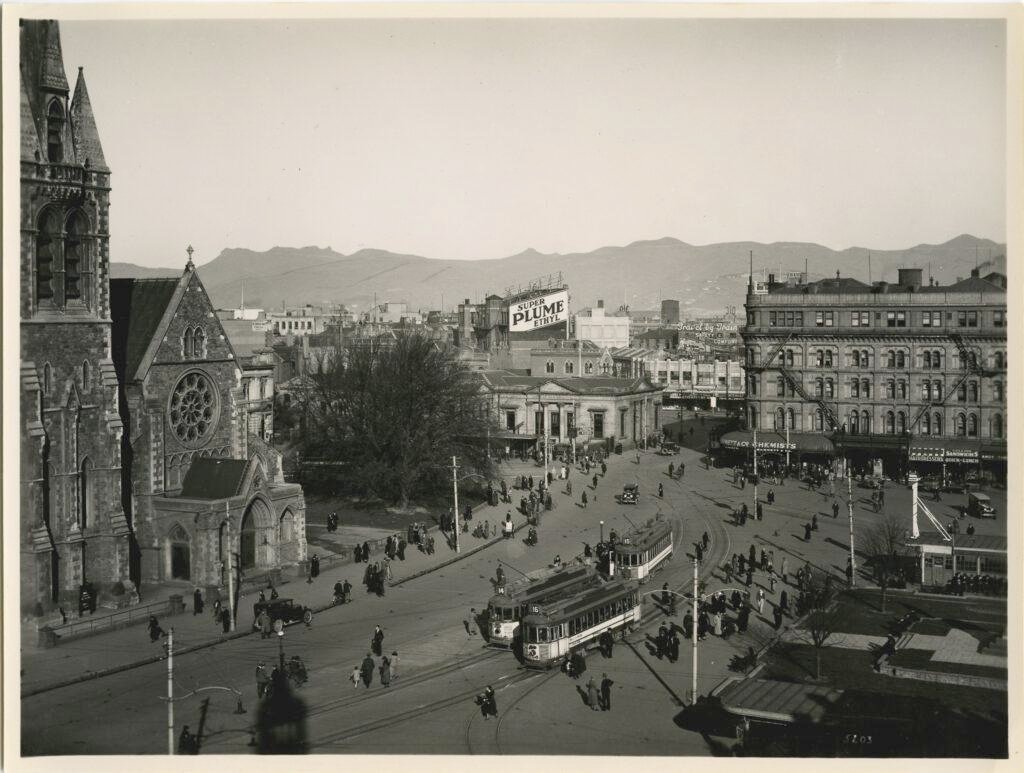
Karen’s Children
- Charlotte Johanne ‘Anna/Lottie’ Rummel (1879-1957)
- May Constance Rummel (1881–1901)
- Dorothea Emma Rummel (1883-1922)
- Catherine Jane Rummel (1884–1959)
- Henry Gottlob Rummel (1888–1912)
- Maud Agnes Rummel (1891–1955)
- Mary Louis Rummel (1894–1957)
- Herbert Hermann Marten Rummel (1895–1897)
- Gustav Fritz Constantine Rummel (1897–1969)
- George Walter Wiezel Andrasen [sic] Rummel (1874-?) [d. 1938; 1938/22957?]
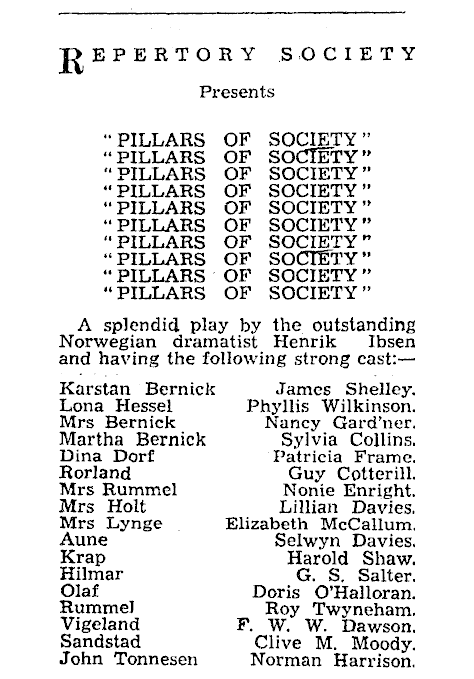

Additional Information
Karen’s parents are Andreas Ingebretsen (1824-Aft. 1875) and Anne Margrethe Larsdatter (1829-Aft. 1875).
Their 1848 marriage record lists “brudgommens far” as Ingebreth Ols.[en] and “bruras far” as Lars Simens.[en]. I am currently researching Anne Margrethe Larsdatter (1829-Aft. 1875) and her mother, Christine Andersdatter (Abt. 1801-1877), both born in the Asker region of greater Oslo, Norway.
Family Letter
“I have copied out some information from a book belonging to Doris that was given to her by her grandmother in 1923. It was evidently a confirmation present to great-grandmother as it was titled: Karen Dorthea Andreasdatter – fodl. 17 Octob: 1854 – confirmeret [confirmed] 24 April 1870 – Cristiania Norge”.
If you are a relative of Karen, please get in touch, especially if you have memories of her and her family. Or leave a comment below!
References
Beattie PJ & Pomeroy M (2013) Onward: portraits of the New Zealand Expeditionary Force (vols 1-5). Vol. 4: Includes portrait, Fair Dinkum Publications, Auckland, New Zealand.
Dana LP (ed) (2008) Handbook of Research on Ethnic Minority Entrepreneurship: A Co-evolutionary View on Resource Management, Edward Elgar Publishing, UK.
Ekins A (1991) ON THE FRINGE OF HELL: New Zealanders and Military Discipline in the First World War Christopher Pugsley, New Zealand International Review, 16(6), pp. 29–31. DOI:10.2307/45234142
Lyng J (1939) The Scandinavians in Australia, New Zealand and the Western Pacific, Melbourne University Press in Association with Oxford University Press, Melbourne, Australia.
Pugsley C (1991) On the Fringe of Hell: New Zealanders and Military Discipline in the First World War. Auckland, New Zealand.
Semmingsen I (1960) Norwegian emigration in the nineteenth century, Scandinavian Economic History Review, 8:2, 150-160.
DOI: 10.1080/03585522.1960.10411427
Sources and Helpful Resources
Norway (Norge)
Digital Archive – Emigrants from Kristiania 1871-1930, edited version;
The National Archives of Norway (Digitalarkivet) Parish Registers (Link);
Norway Heritage – 1872 – S/S St. Olaf, Det Søndenfjelds- Norske Dampskibsselskab.
Oslo Museum (Digital Museum).
Larkin, R.F., Genealogy 201: Reading the Norwegian Churchbooks by Richard F. Larkin (son of Agnes Christiansen).
Notes: “Norway has one of the most readily accessible bodies of genealogical data of any country… the ‘Kirkeboker’, or churchbooks, are an important part of those data. They are the primary repository of data on births, marriages, and deaths for roughly the period 1670 to 1930, and, best of all, they are online and accessible without cost. Their only real downside is that they can be a challenge to read. This paper will help you meet that challenge“.
New Zealand (Aotearoa)
Birth, Death and Marriage Historical Records (New Zealand Government);
Museum of New Zealand (Te Papa Tongarewa);
Papers Past from The National Library of New Zealand (Te Puna Mātaruanga o Aotearoa);
RECOLLECT: West Coast New Zealand History.
New Zealand Army Expeditionary Force. (1914-1919). Nominal Rolls of New Zealand Expeditionary Force, Volume I. Wellington, N.Z…Vol 1: 635.





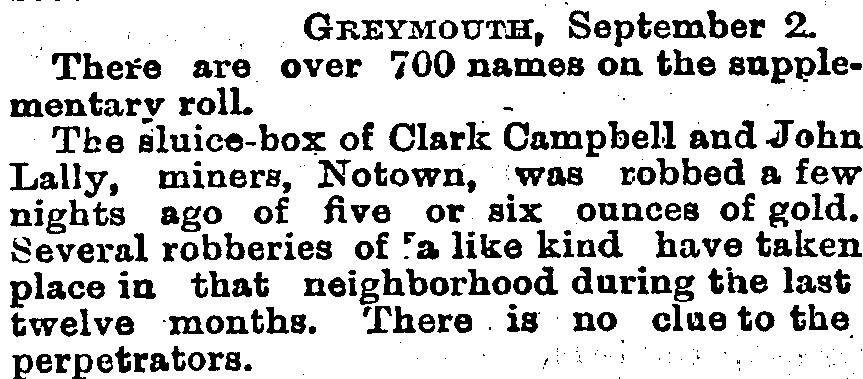
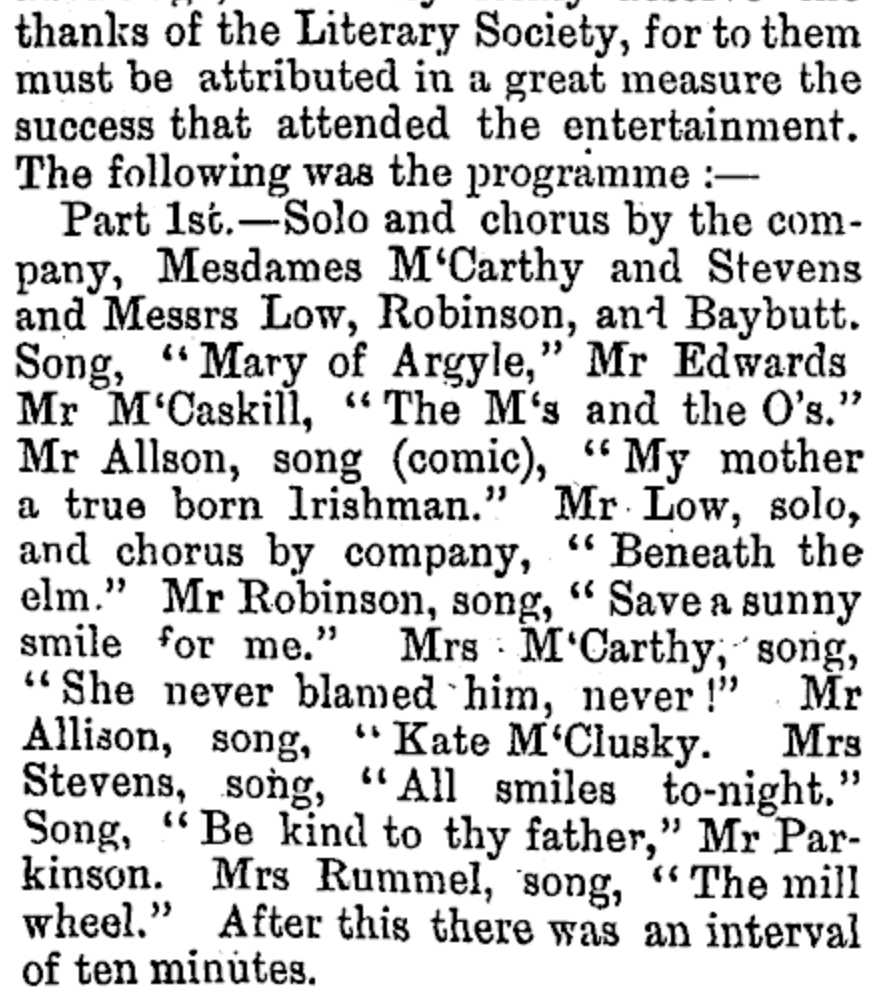
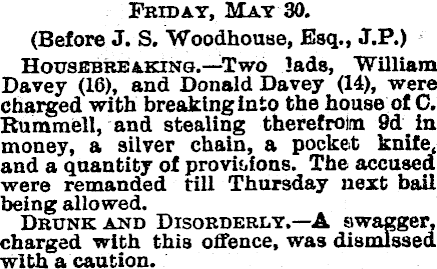
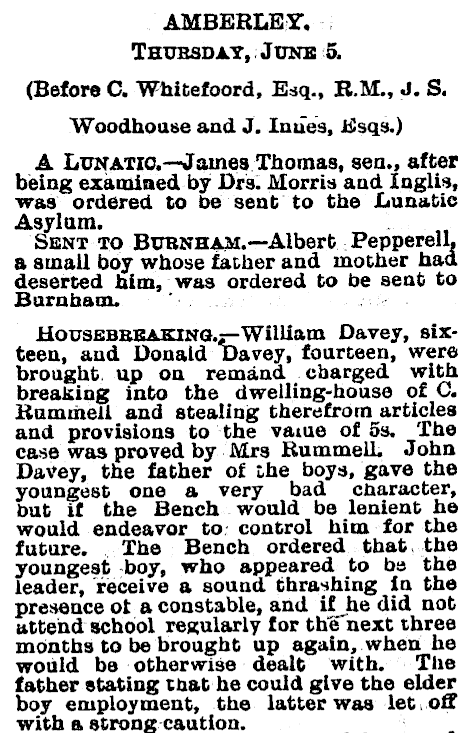
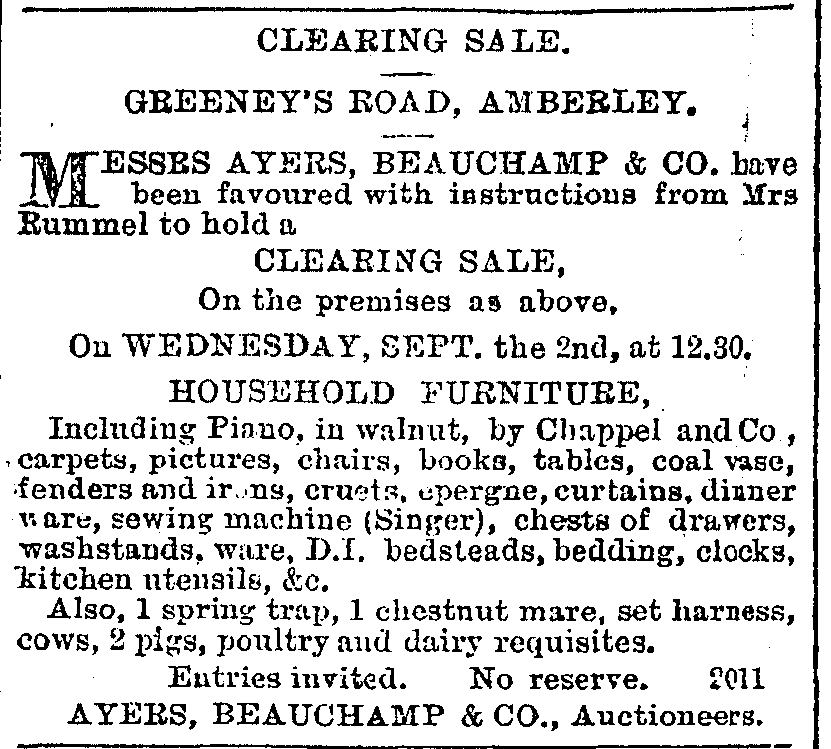
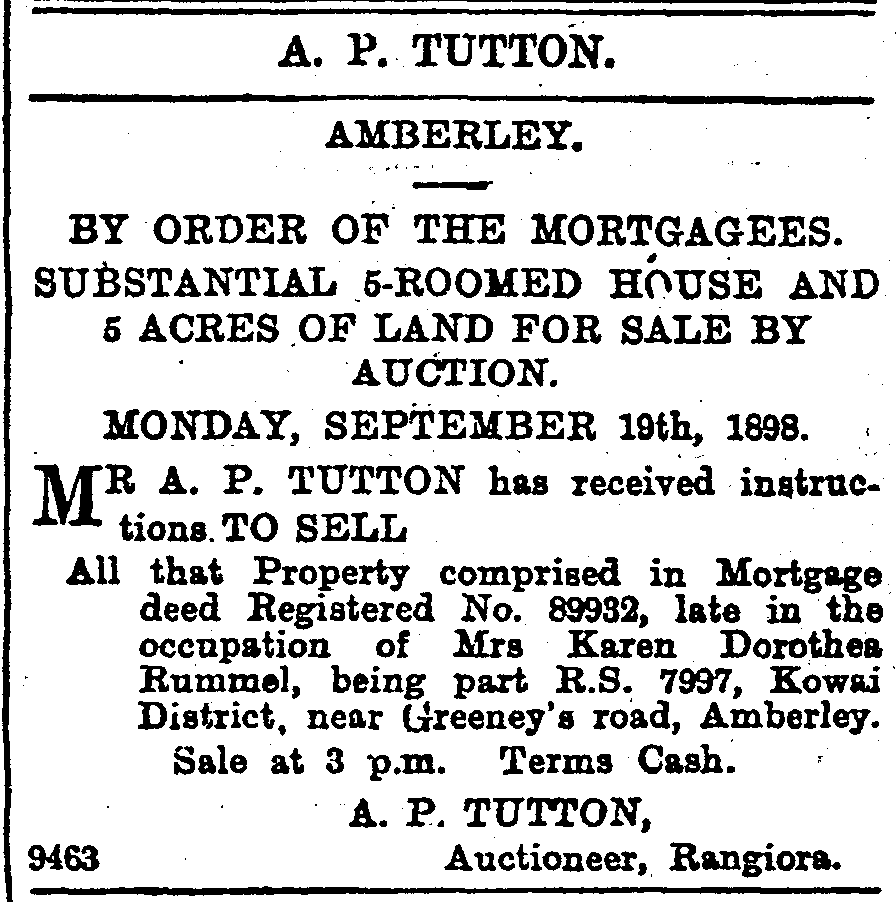

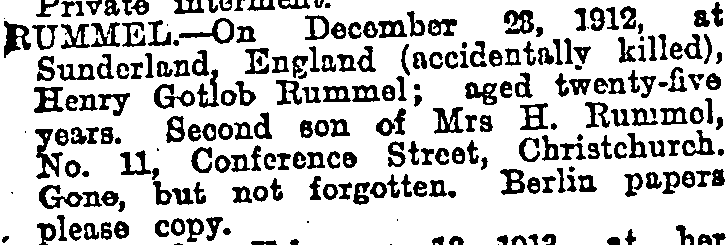
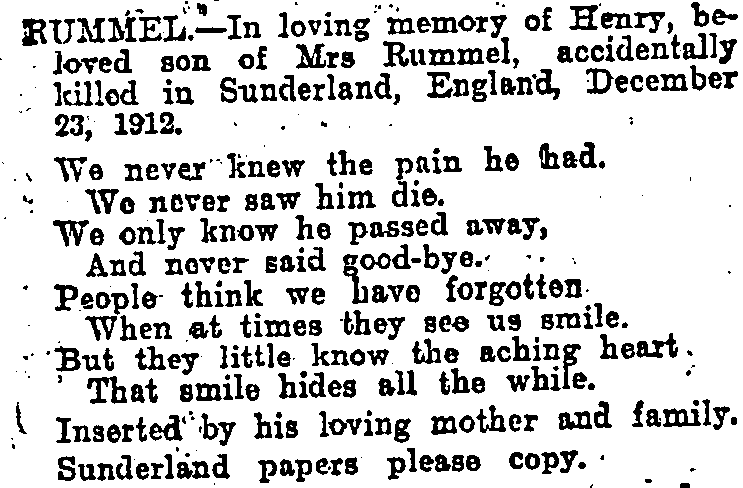
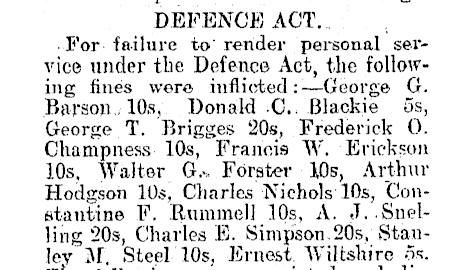
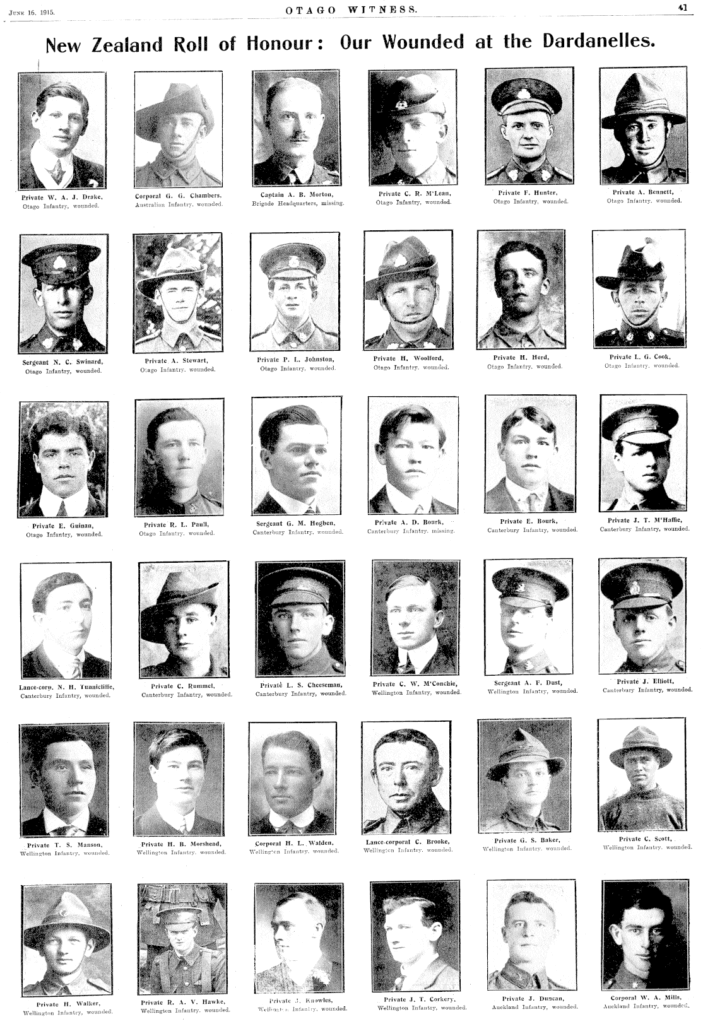

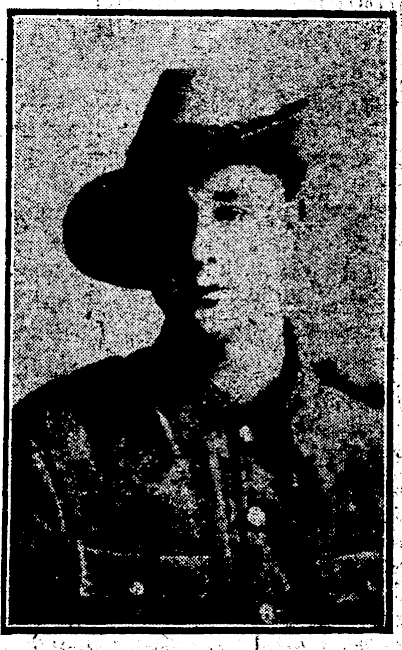
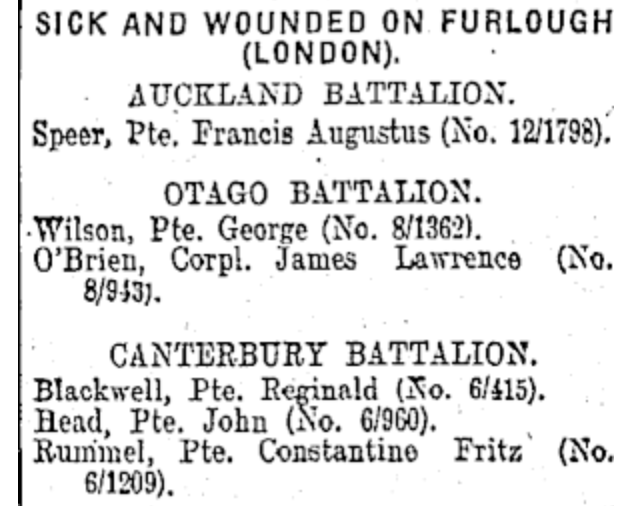

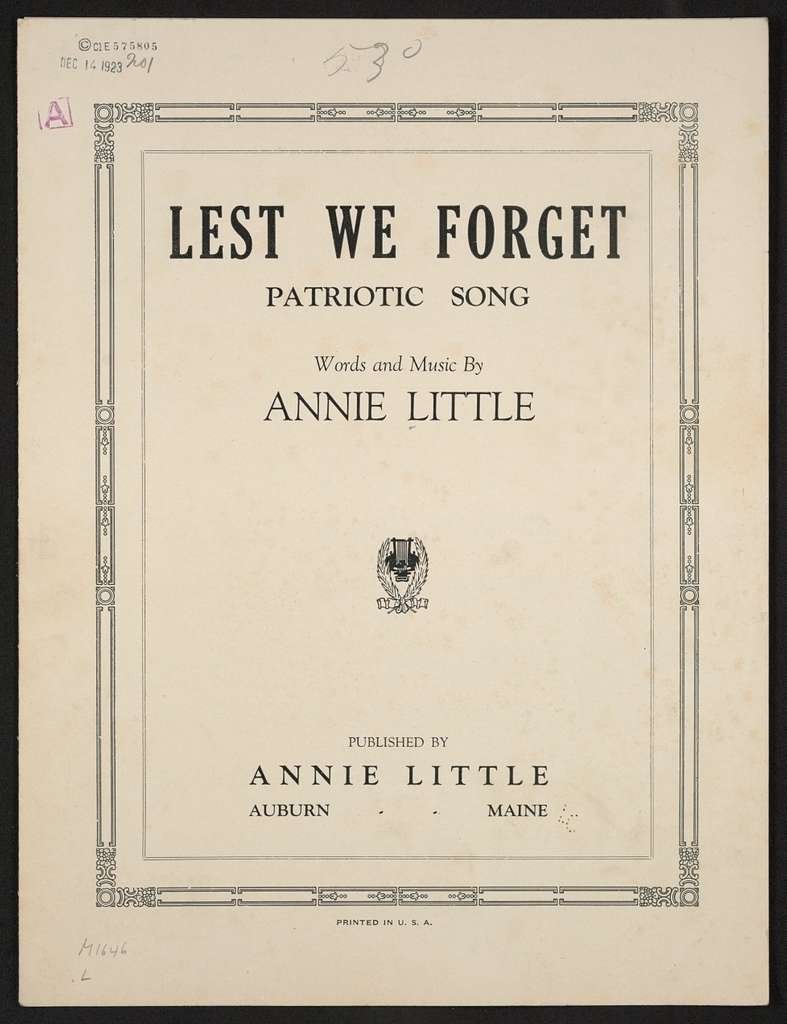


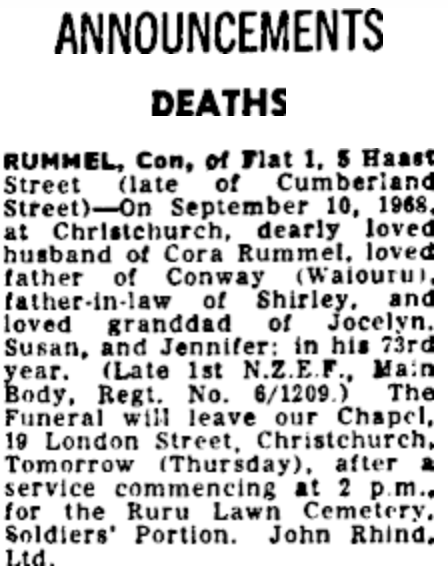
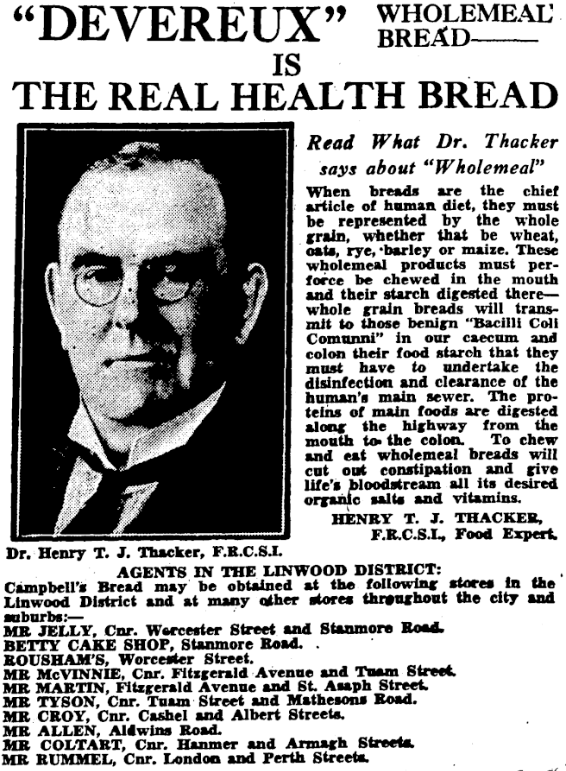
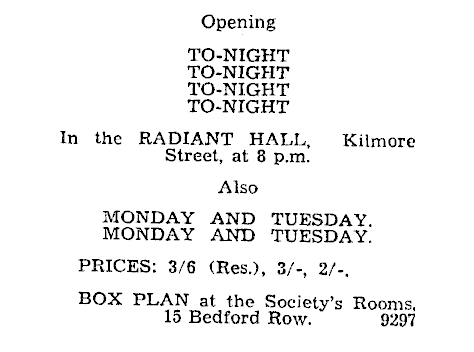
Written by my daughter Kate, about my great grandmother Karen, mother of Maud Rummel (my grandmother). A great article to read about my NZ family.